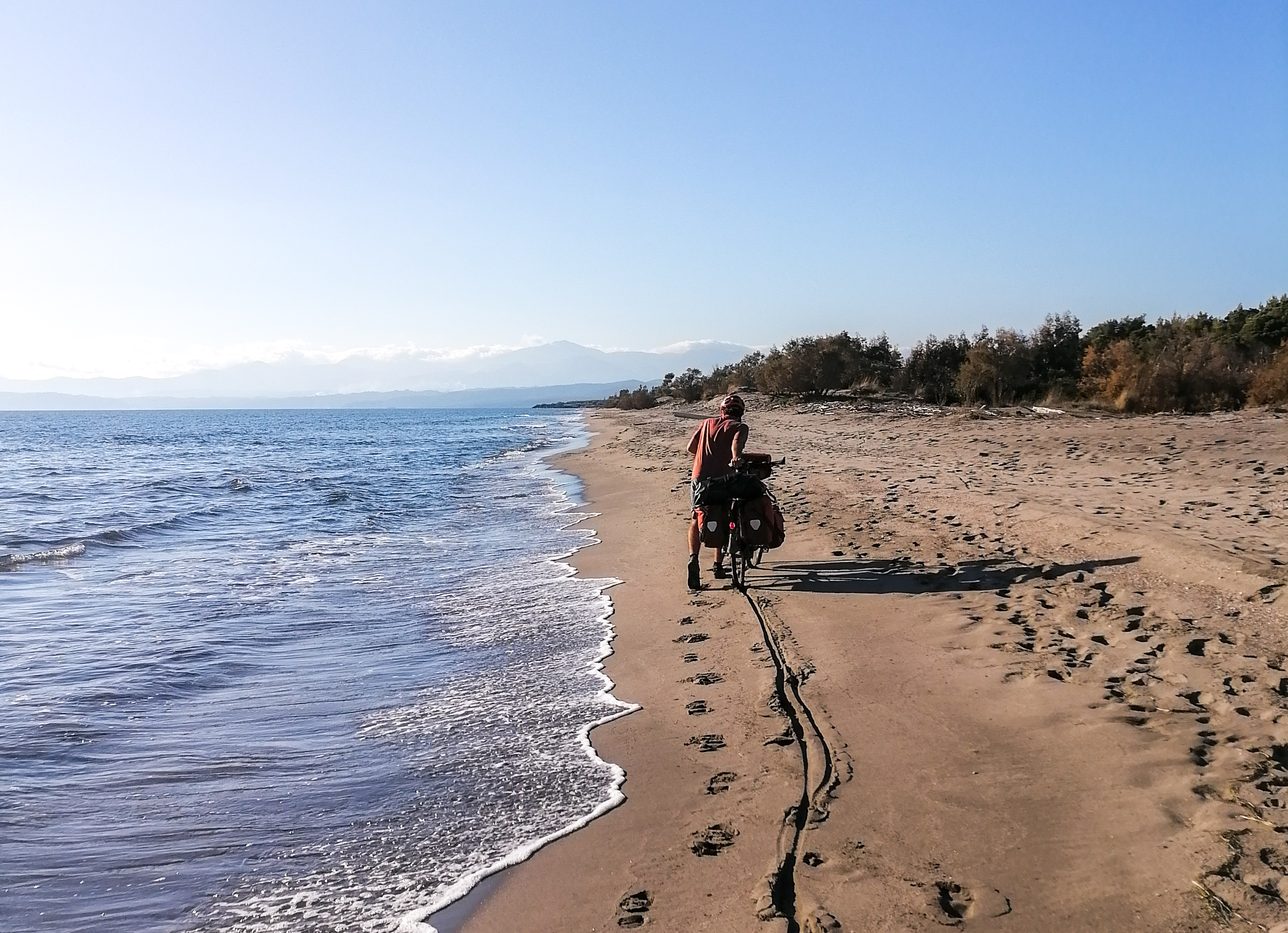
The arbitrary cutting between our articles had left you for a long time in Ioannina, in the north of Greece. We hope that you took the opportunity to discover the city, and that you were not too bored. We now propose you to leave!
Departure to the South
As the evening approaches, we find on the map an isolated church at the end of a way, which leaves the road in coast which allows us to leave the city. We find there a piece of grass sufficient to pitch the tent, and this will prove to be a good technique for the rest of our journey in Greece. For the moment, the objective is to drive towards the south, to reach the Peloponnese. As we were told, we observe an impressive number of stray dogs around us, going from garbage can to garbage can, or from meadows to meadows. Some even seem to try to graze the grass of the meadows. On the climbs, they chase us for a few hundred meters, but they are not a particular problem. In the north of Ambracie, while we ride on a road in cornice with a very sympathetic sight, waterspouts fall on us, what obliges us to bring out the complete equipment of waterproof clothes, in order to delay slightly the moment when we finish completely soaked. We go down again in a valley and we struggle a little to find a place of bivouac in this steep relief, before settling behind the changing rooms of a soccer field. The huts of replacements allow us to find a shelter in the rain and to cook then to eat relatively in the dry, what is very appreciable.
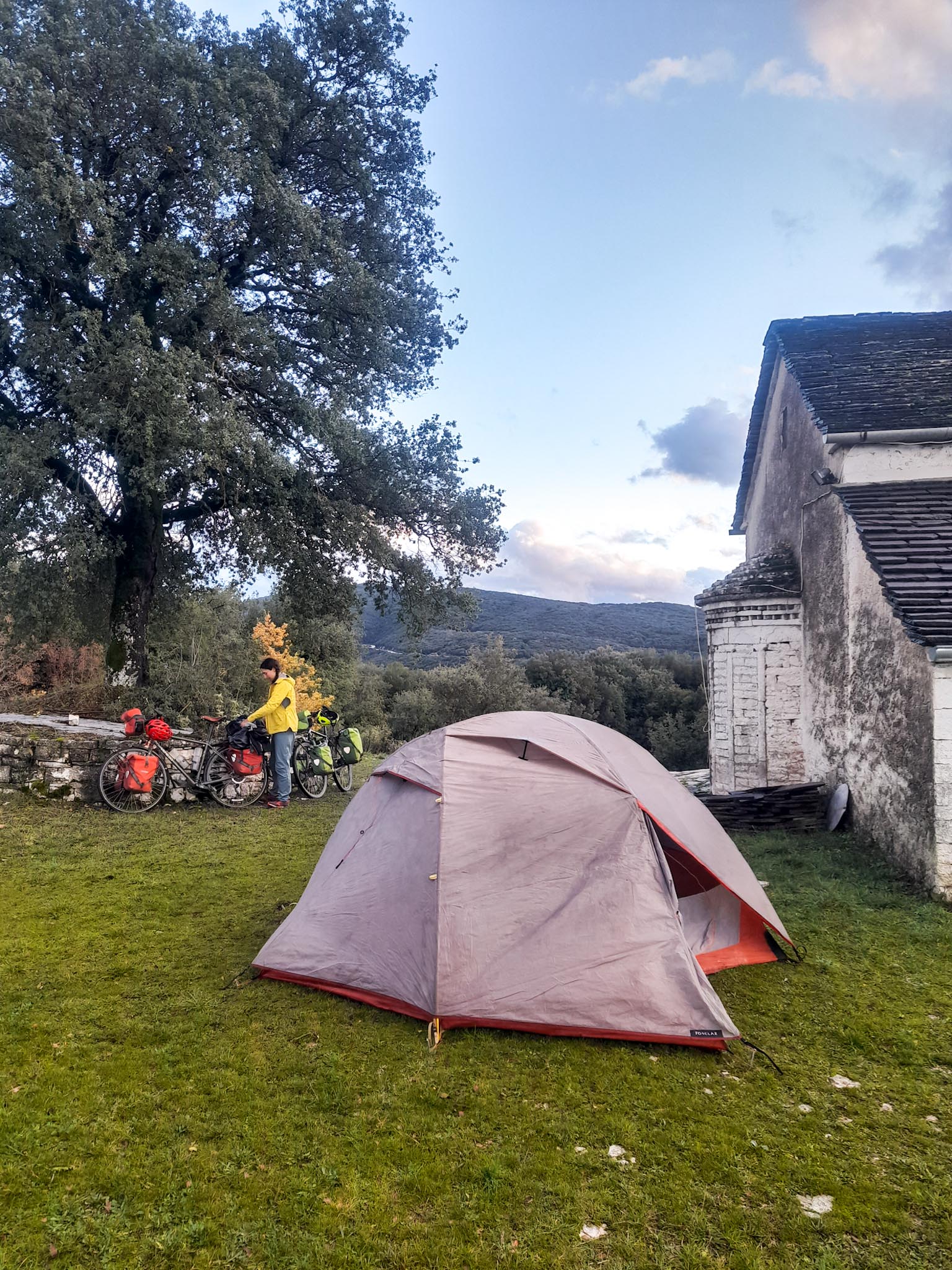

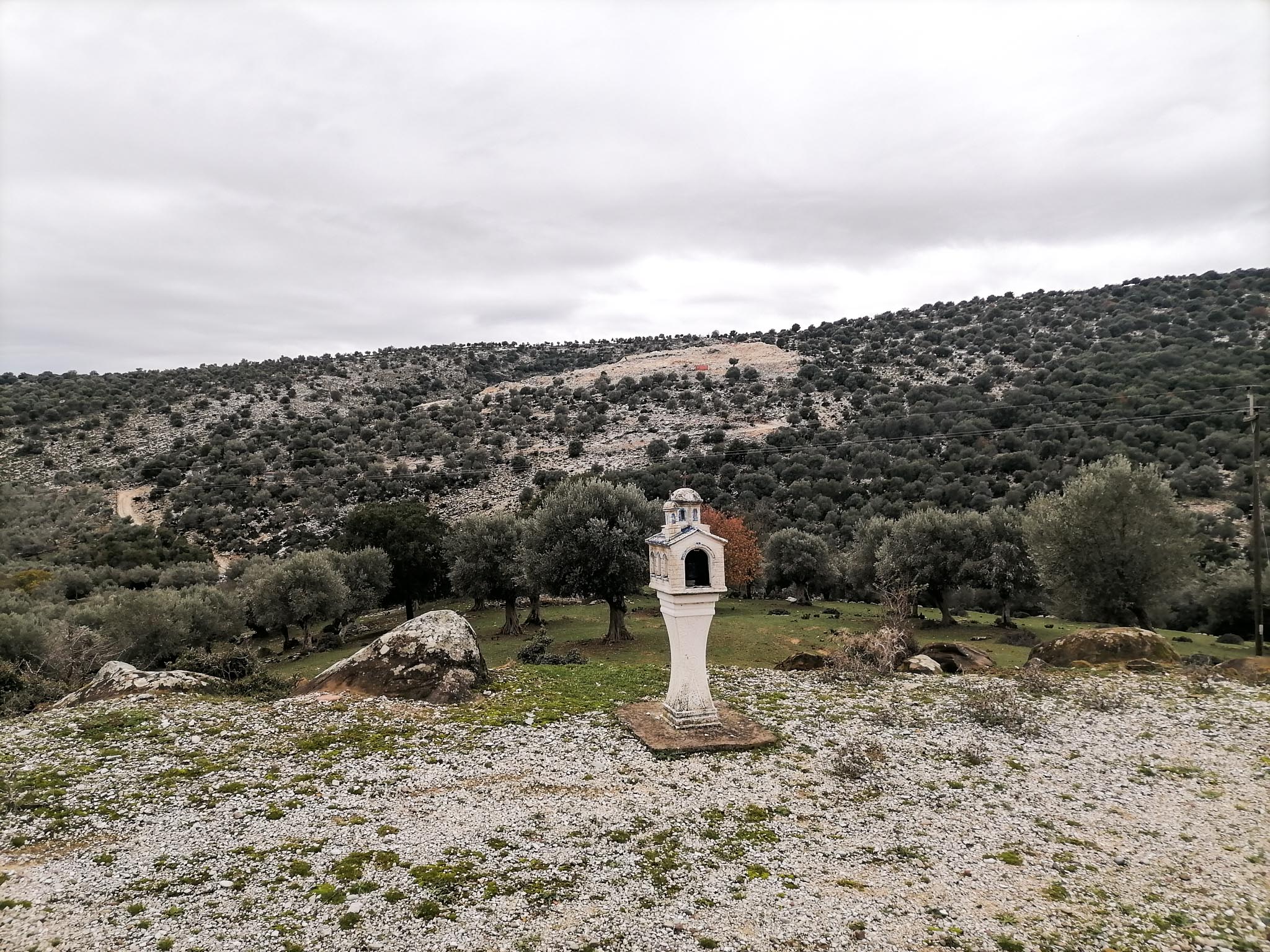

We progress quietly towards the south, on very uneven roads, which make us, the air of nothing, accumulate of the unevenness. As in Albania, the olive trees are omnipresent, but we observe new elements in the vegetation. On the small heights, they are forests of holm oaks which impose themselves and we find ferns on the edge of the roads, which we had not seen since France. We even find prickly pear trees in the villages: their fruits are delicious, but they have the terrible habit of impregnating all our belongings with fine thorns as formidable as they are untraceable. One month later, there are still some in our gloves…


In the middle of the olive trees
On the slopes, the olive plots impose their law, and the harvest is in full swing. As in Albania, this work seems to be a family affair, with the notable difference of motorization: the olives are harvested with an electric rake. They then fall onto tarpaulins spread out on the ground, before being filled into large jute sacks that are piled onto tractor trailers, which can be seen criss-crossing the roads. Right after harvesting comes pruning: the trees are pruned fairly straight and the branches are often burned directly on site. A few farms seem to be larger: you can see them by the large groups of seasonal workers who work there, but around the Gulf of Ambracie, small farms dominate. The producers live in hamlets of about ten houses, sometimes with a few animals in a shed of odds and ends. Sometimes they don’t have access to drinking water, and when you look for supplies, you are often offered bottles straight from the supermarket. We had previously taken the habit of bivouacking on the terraces of olive trees. Unfortunately, the orchards are here often solidly fenced, and our daily exercise of research of a place where to put the tent is not evident, more especially as the ground is often sloping in the rare clear places. In the evening, the search takes a little more time but we always end up finding a few flat square meters, and out of sight, often at the price of going back and forth in the steep secondary roads.
During our days, we often meet farmers whose favorite pastime consists in launching into long monologues, to which we understand absolutely nothing. With great gestures, they indicate us the route, without asking us where we intend to go. From what we observe, they absolutely want us to go in a certain direction, which is often the same one we came from.
Culinary strategies
To our great surprise, the prices of the mini-markets are particularly high. In order to respect our budget, Lidl is the best solution, although they are not very common. As soon as we cross a city big enough to welcome this sign, we fill up with groceries for the five days to come. The variation of weight of the panniers is then well felt, in particular at the front of the bike, since they are the panniers laid out on both sides of the fork which have the honor to be used as pantry… Since we made a little the tour of the freeze-dried dishes and that the gas bottles are easily found in this country, we start to cook more, although all that remains rather limited by our camping equipment. On the menu there is almost always a dish made of a starch base (often pasta or rice), which is cooked with vegetables (eggplant, carrots, cabbage or onions) and a sauce (cream and curry, pesto or tomato and tuna sauce). This may not seem like much variety, but each new combination of our ingredients seems to be a completely original dish that delights us. For dessert, Maryam loves her new find: chocolate tahini. As Luc does not like too much, and so that there is not jealous, we buy also a spread with hazelnuts. Each one has its pot, whose contents go down to crazy speeds…
Poisoned gift
When we reach Agrinio, we return to the agricultural plain and the ploughed fields, in which it is not easy to find a place to bivouac either. However, the bottom of a path not far from the lake shore provides a very suitable place. As we have some internet left on our phone plans, we allow ourselves to watch the semi-final of the world cup, in our comforters, and Maryam has the joy to have a last meeting in video-conference in the early morning, to settle a dark story of number of weeks of training necessary to the validation of her diploma. When we get back on the road, Luc is approached by a group of retired people while he is filling the cans at the fountain in front of the church. They exchange a few words and one of them makes us sign to follow him to his house, before asking us to wait for him. He disappears a few moments and returns with two enormous bags filled with oranges, that he wishes to offer us. We show him our bags, where no space is available, but he doesn’t want to hear anything… So here we are again with each one a bag of oranges suspended to the handlebars, by estimating us happy to have not met a producer of watermelons. We stop a few meters farther to reduce all these citrus fruits in juice: the small place turns into workshop of press, and we fill three liters of juice.
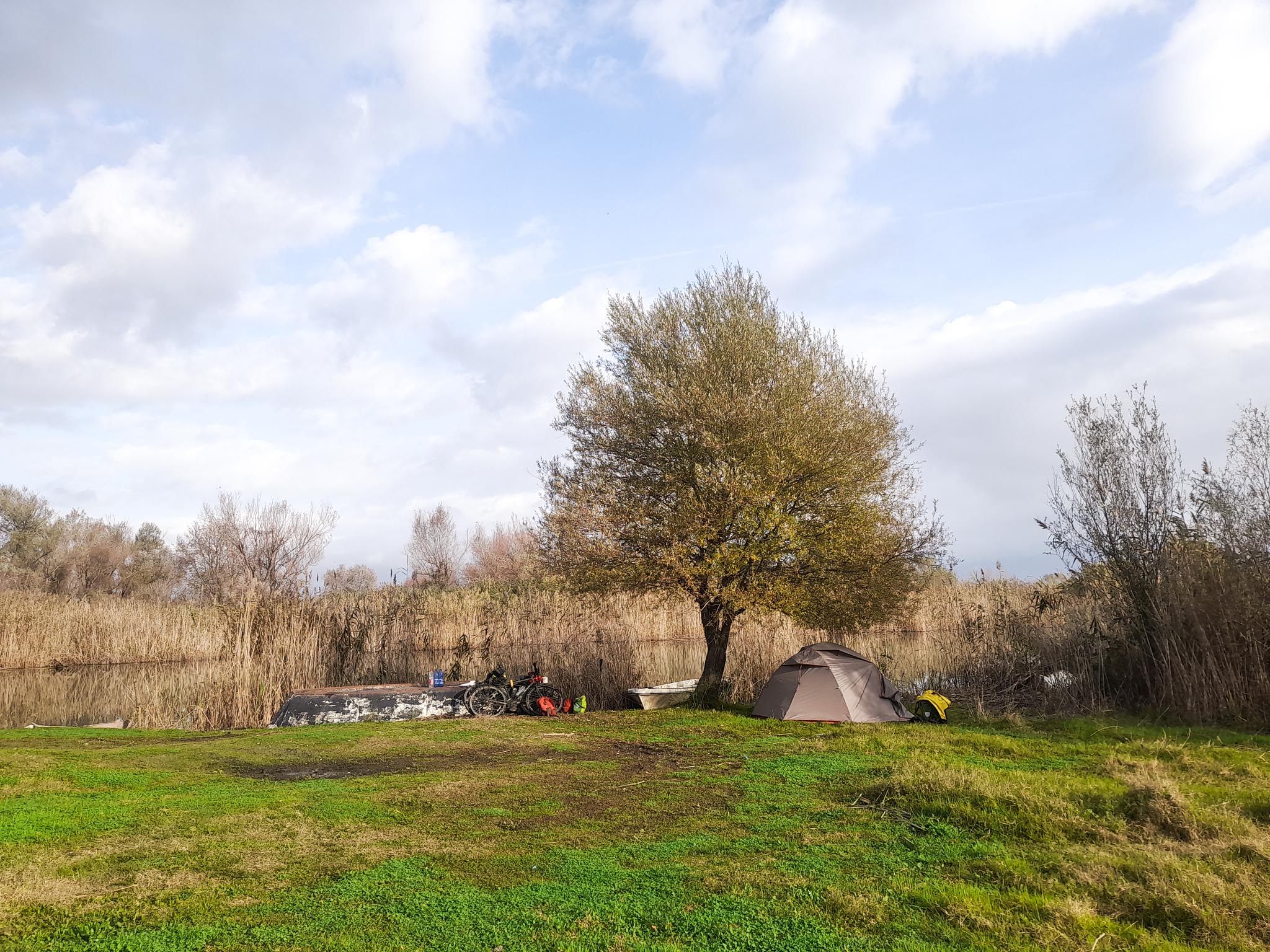

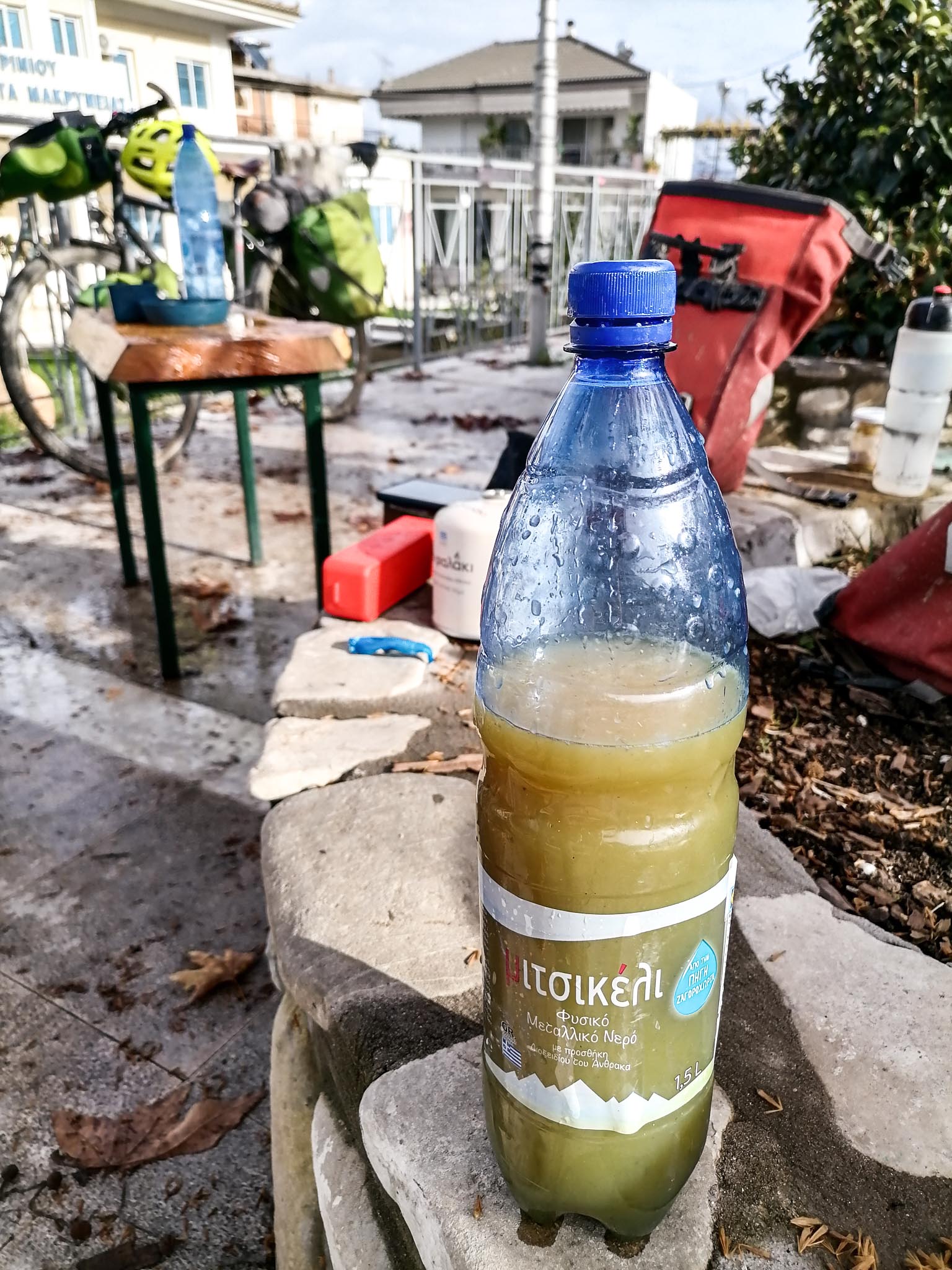

Once the all tidied up, we leave in direction of the south to approach the Peloponnese. We climb on the reliefs of the south of the lake by taking advantage of the sight which is released. In the slopes sometimes quite steep, we see ourselves obliged to slalom on the road to continue to advance, what amuses a lot the some farmers driving tractors whose trailers overflow with freshly harvested olives. At the top, we find a more familiar vegetation: a mixture of beeches and oaks which could remind us of the Massif Central if some holes through the trees did not allow us to see the sea. One is made run by a pack of stray dogs, then one rushes in the descent. Taken of a doubt at the end of a kilometer, we look at the map and we realize that we missed an intersection. Half-turn, and we set out again in the rise, by pressing with all our forces on the pedals because we had put “all on the right” for the descent (3rd plate, 10th speed)… Once again on the good rails, we dash this time in the good descent. We cross some hamlets still well bloomed in this month of December, and the road becomes a track a little muddy but all the same very nice. The turns follow one another and we take ourselves a little for pilots of motocross. Luc imagines for a moment that the descent could be amusing to film in “embedded camera”. Under the skeptical glance of Maryam, he tinkers a little to hang his phone to the front of his handlebar, and launches the video. Of course, the scene he imagined to look like an action movie doesn’t look like anything. Because of all the shaking, it looks more like a surveillance video of a strong earthquake…
“Has anyone seen the bridge?”
Arrived at the bottom, we must borrow a bridge to cross the river Evènos. We approach and, in the place where the bridge was to be, we find only a heap of gravel, and rather powerful floods. The map is formal: there are no other bridges, nor a way that would allow to cross further along the river. The only solution would consist in going up all that we have just gone down to bypass the mountain, which is far from enchanting us. We imagine a moment to cross by ford. The river is not very deep and we could make several round trips by carrying the bikes. But the current is really very strong and we are afraid to be carried away. Maryam explores the banks to see if there would not be possible points of passage. We also locate a point where the river is wider, and where the current should thus be weaker, but the enterprise seems to us all the same too risky. We approach then some houses in the vicinity and a man leaves his house, warned by the barking of the surrounding dogs. He did not speak English for ten years, but we manage all the same to understand us. He explains us that there is a way which goes along the river and which does not appear on the maps, but that we should be able to borrow. His explanations are a little more confused about the way to cross the river. Maybe he tells us to take the bridge of the highway, maybe not. We shall see. We thus follow the indicated way, in the usual din of the multiple dogs, that the presence of cyclists seems to irritate above all. As promised, the track is completely passable, and walks on the side of the mountain. As the night falls, we begin to wonder where we can sleep. The way is narrow but widens sometimes in the bends. We could perhaps put ourselves at the edge of the road. Considering the traces of vehicles, nobody seems to drive at this place, and we did not cross anybody since we are there. Only, because of the encaissement of places, the wind risks to be violent and the night rather agitated. We prefer to continue, by driving a little at night, what proves to be a wise decision because we find a meadow in a place where the valley widens. As every time that we bivouac in a place where there are several possible places where to put the tent, we make knots in the brain to find the i-de-al site: “between this clod and this clod, the grass looks rather soft”. “Yes, but 3 meters further, there are no dung”. “And if we went right here, we wouldn’t have to deal with the rocks”… Sometimes it’s easier when you don’t have a choice.
After a good hot meal and a very restful night, we wake up under a cloudless sky, and a powerful sun. It is thus in t-shirt that we leave in search of a bridge to cross. We chain some climbs to 15 %, passages where it is necessary to push and quite a lot of mistakes of routes (there is nevertheless a reason for which the way does not appear on the maps), to finally arrive in a village where this time, it is sure, there is a bridge. And not any bridge since even a railroad borrows it, and that the road is quite wide, with a brand new tar! We rush in the straight line while being all the same intrigued by some signs laid out at the edge of the road, but it is only by arriving at the end that we understand the extent of the disaster: the bridge is well present, but completely collapsed: the railroad is folded, and it is out of question to cross. We see in the distance a construction site: workers build a dam on the river, and it seems possible to cross. Indeed, trucks move aside and we can finally reach the other bank, which taunted us since a good moment. We stop at the height of a fountain to make some dishes and to fill our cans.
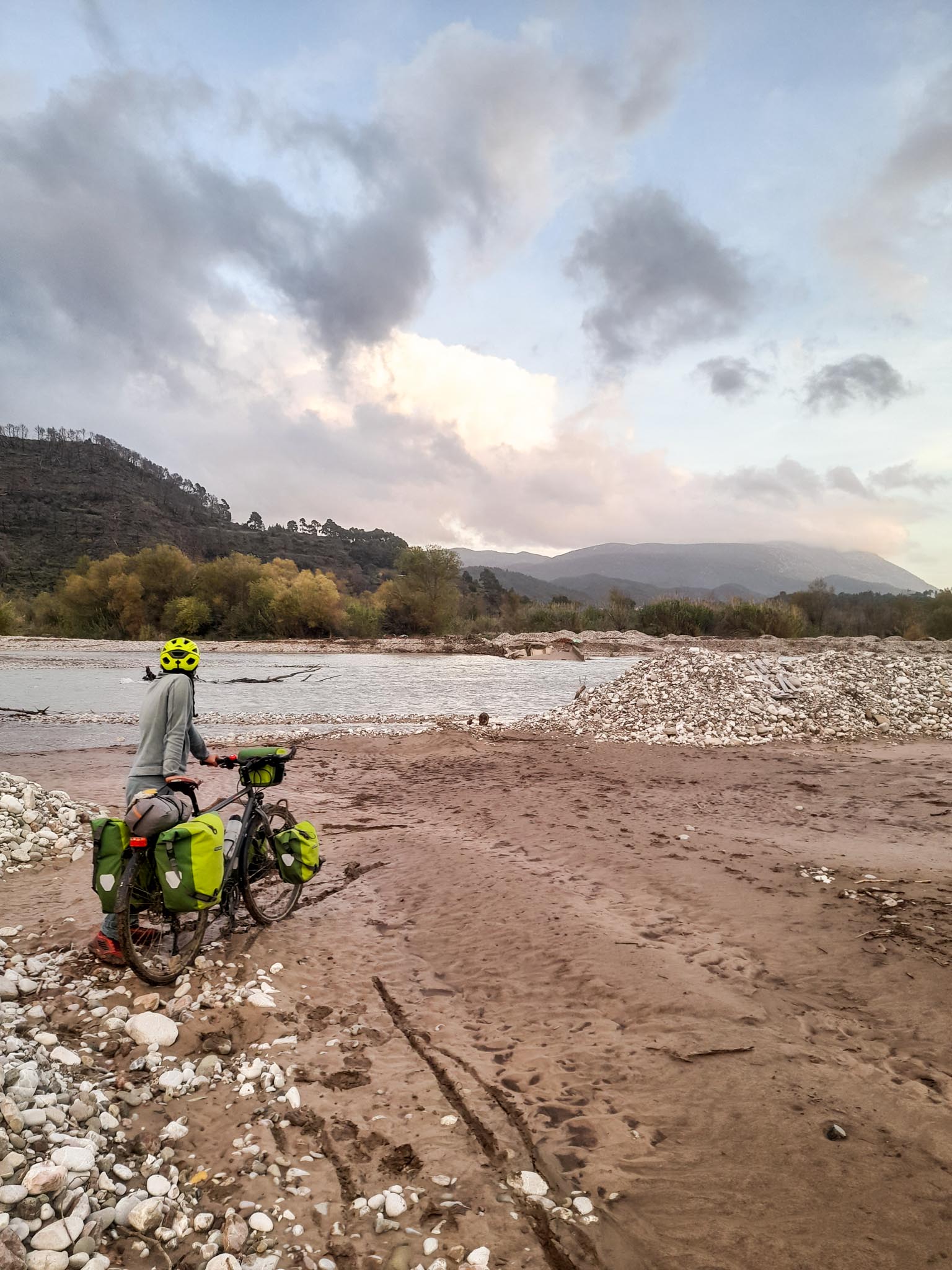
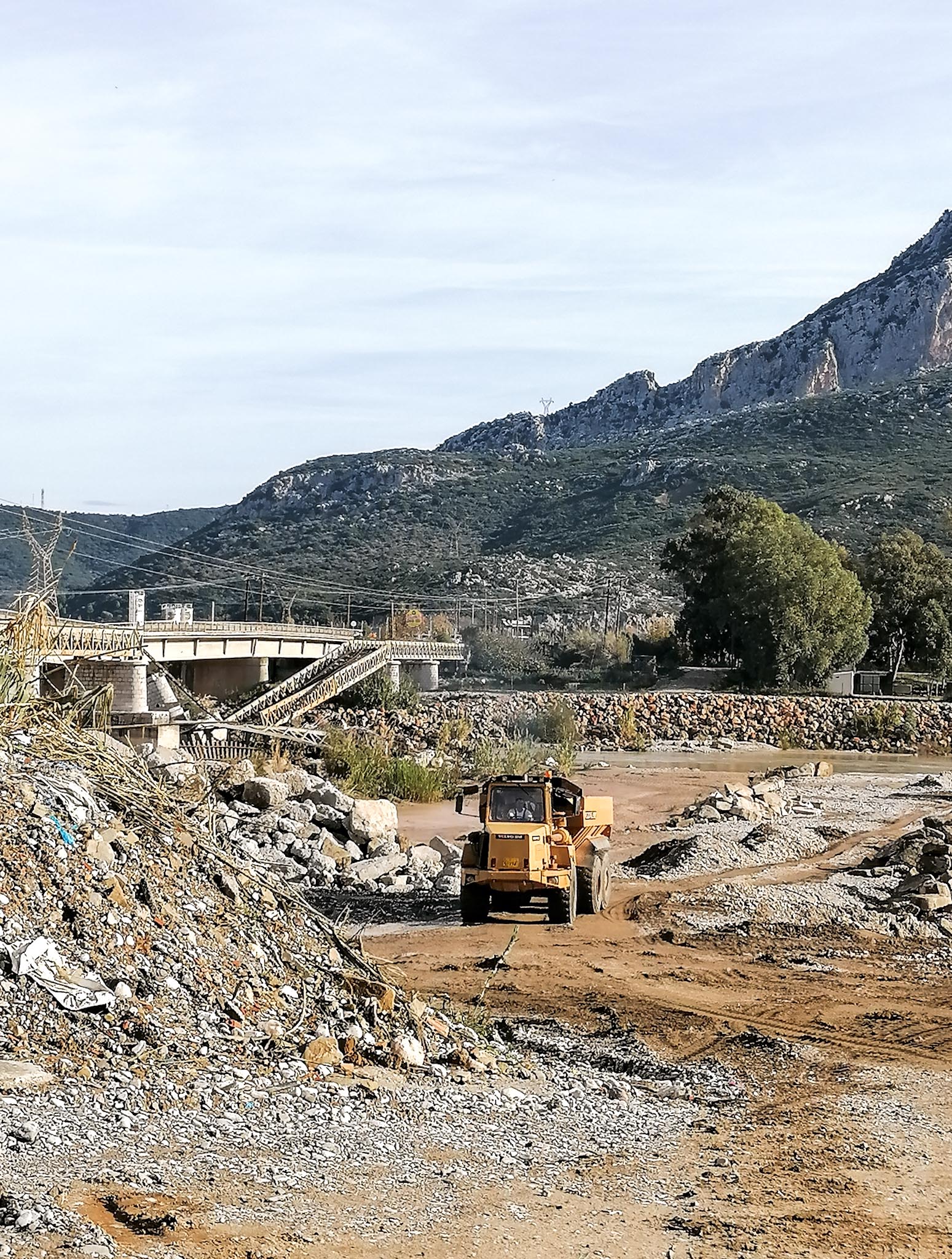
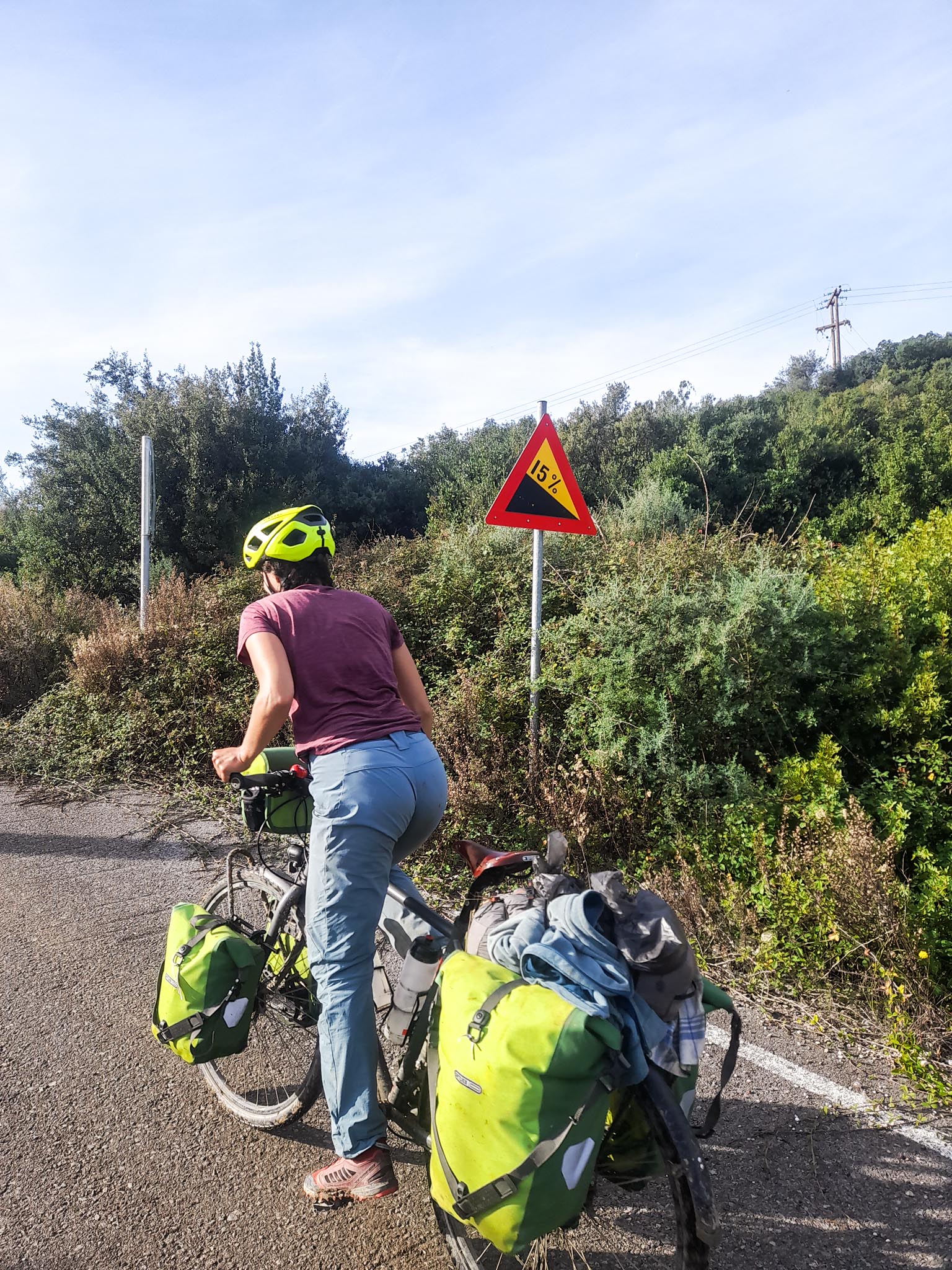
An almost secret beach
We leave in the middle of the olive trees and under an always present sun. Maryam makes even 10 km in bonus to go to look for her cans which she had forgotten in the fountain, and we leave in direction of the big viaduct which must allow us to join the Peloponnese. Given that the hour advances and that the steep relief of the zone does not seem very hospitable, we choose to go on a beach of pebbles, well in the shelter in a bay below the highway in cornice. We make a last fill of water at the level of the post of video surveillance of the highway, and we go down the few laces which lead to the beach. Just arrived, a man comes to discuss with us. This Iranian travelled by bike from the Netherlands to East Africa, before coming back. He sold his bike, came back to Greece and settled in a cave at the end of the beach to think about what to do next in his nomadic life. Although he invites us in his cave, where mats of bamboos are aligned, we prefer to install the tent on the beach to avoid the smell of bat droppings rather marked. We bathe in a water at a quite acceptable temperature, and we have fun to make heaps of pebbles: the balance is more difficult to find there than on a bicycle…
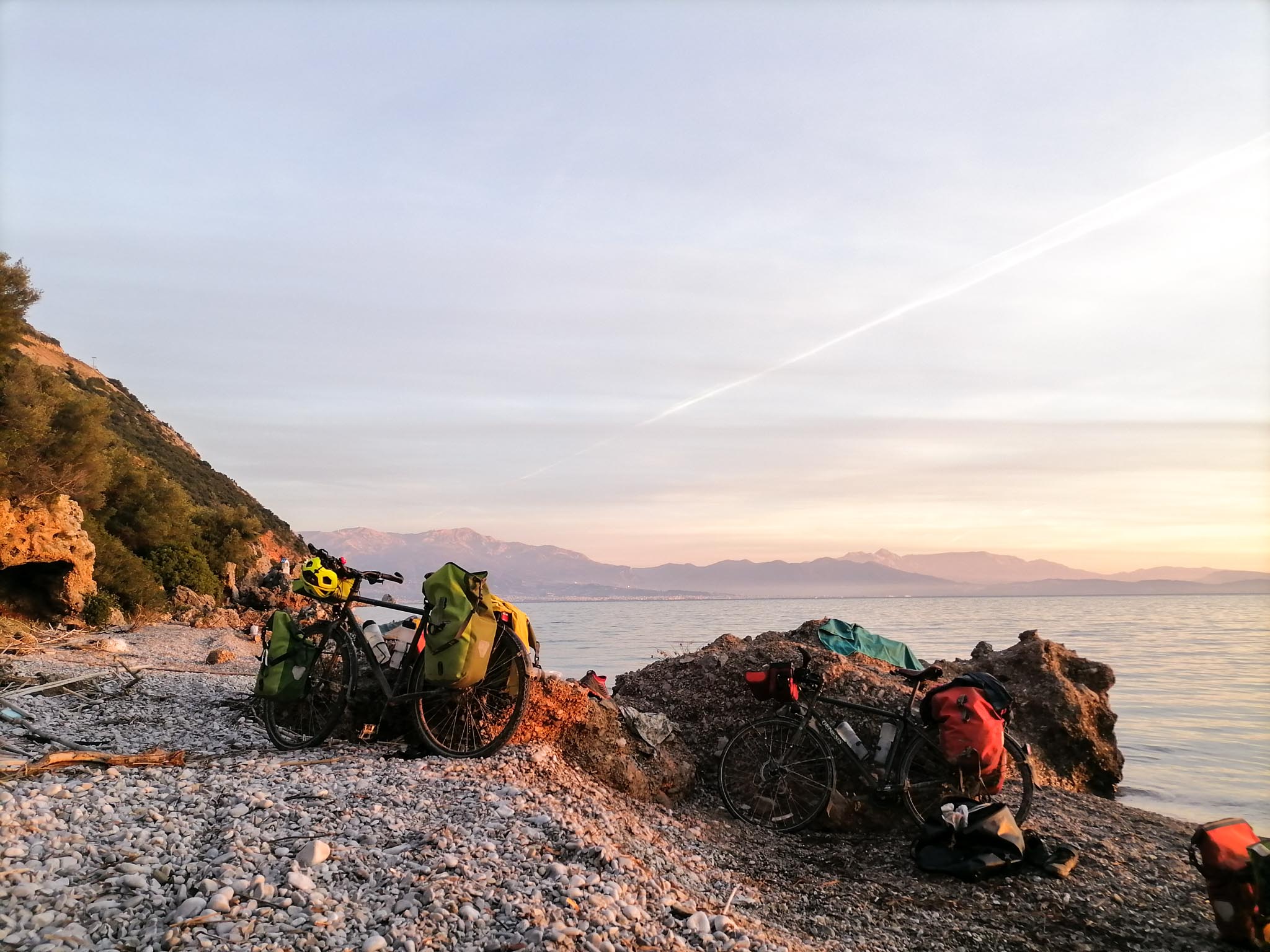
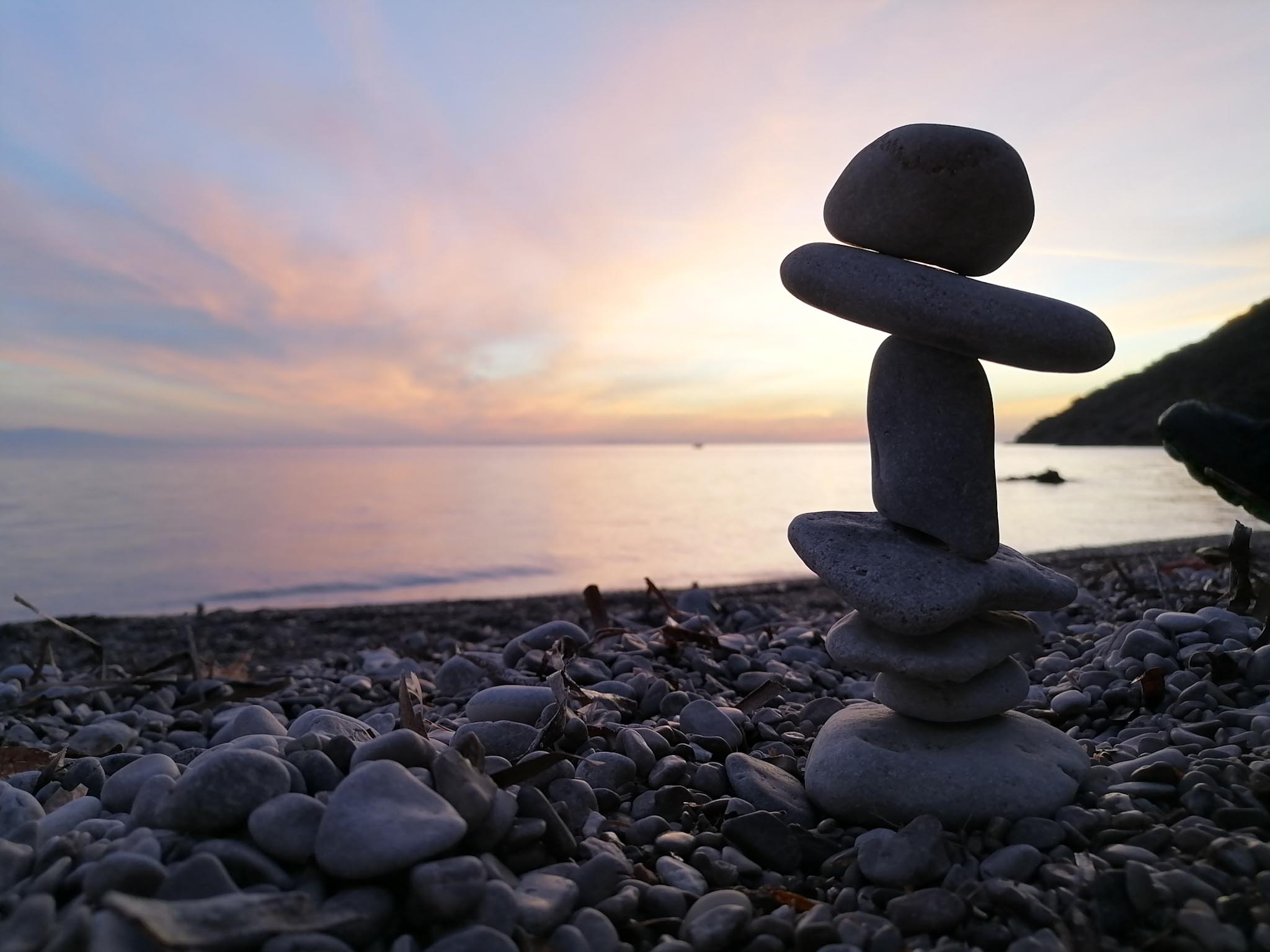
We reach the Peloponnese
After this very nice rest, we finally reach the big viaduct with stays which allows us to join Patras. Under the advice of local cyclists crossed during their Sunday outing, we take the sidewalk of the bridge, which allows us to cross without encumbers, in spite of the powerful wind. The traffic in Patras is rather important, but we extract ourselves from it easily to refill shopping in the Lidl of the corner. Luc needs new tires for his bike, because his are completely worn out. The first bike store doesn’t have the tires he’s looking for, but the salesmen try to give him gravel tires, which are not at all suitable. In another store, he came across a German-speaking bike shop. He doesn’t have the model he is looking for either, but he is eager to help. He learns to Luc a lot of things on the choice of tires and gives him his coordinates so that we can contact him in case of need because he knows bike repairers in all Europe, what could be useful for us in case of need. For lack of tires, we leave with an e-mail, it is already that.
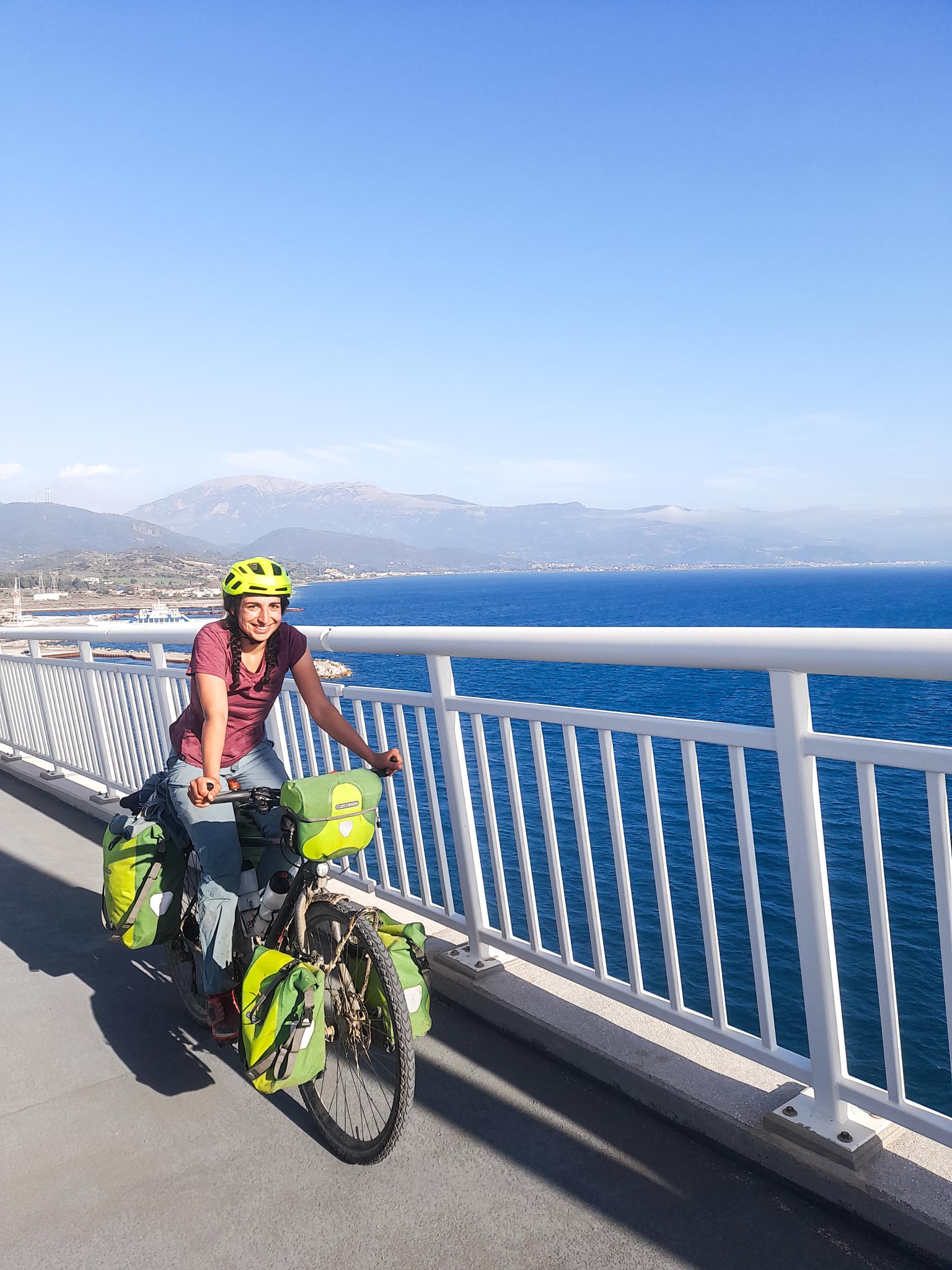

We settle down a little further on a table of picnic to lunch. At the end of our meal, two cyclists come to see us. Pauline and Matthieu are two Frenchmen who finish this day a journey of 6 months by bike in the South of Europe: they take a ferry a little later to join Italy. Coincidentally, they live in Chanat-la-Mouteyre: a small village perched above Clermont-Ferrand, a few kilometers from where Luc grew up. The hill to climb to this village was a great classic from his college years, where the 6 km climb was for him the equivalent of the Galibier that he climbed with his brother, armed with their Decathlon mountain bikes. Nostalgic interlude finished, our interlocutors take out their map of the Peloponnese that they criss-crossed during three months, by giving us a myriad of advices, very welcome because we had not planned much. We spend a great moment together and, one hour later arrive by chance two other cyclists. As usual, they are French. They sit down with us a moment. The happy troop separates at the end of the afternoon: we leave in direction of the south while our friends join the port, the bags furnished with bottles of olive oil.
A little height
At this point begins a new stage of our stay in Greece. We take again mountainous roads, by heading towards Kalamata where Yorgos, a host of the platform Warmshowers, waits for us. We rise towards the mountains of the center, in the middle of really splendid landscapes. We appreciate the sinuous roads of mountain, all in perfect state, under a permanent sun. Every evening, we elect residence next to a new chapel, easy to find since the Greeks have the pleasant mania to build one at the top of each of the heights, obviously numerous around us. In the valleys and on the lower slopes, olives are always present. Cooperative presses are regularly placed and are the epicenters of the seasonal activity. There is always a pleasant and persistent smell of fresh olives, which delights us. On the higher ground, forests and pastures dominate. To circulate on these roads is an enchantment of all the moments. We take advantage of being able to meet again with altitudes in four figures without being frigid. The contacts with the locals are few, but sometimes warm. One day, while we cross a village, we are hailed by a group of about ten persons, gathered around a meal. We leave our lunch but we accept their invitation. Hardly some words exchanged, we find ourselves each one with a glass of juice and a plate filled with roasted chicken and potatoes. As soon as we put down the fork to seize our glass, the women invite us to eat, and as soon as the glass is empty, the men rush to refill it. All this joyful assembly is building a small stable for the sheep. Some of them are using the welding machine to build the frame of the building, under the encouraging look of their companions. When we explain that we are going to “Istanbul”, we are not understood: the Greeks still use the name “Constantinople”.


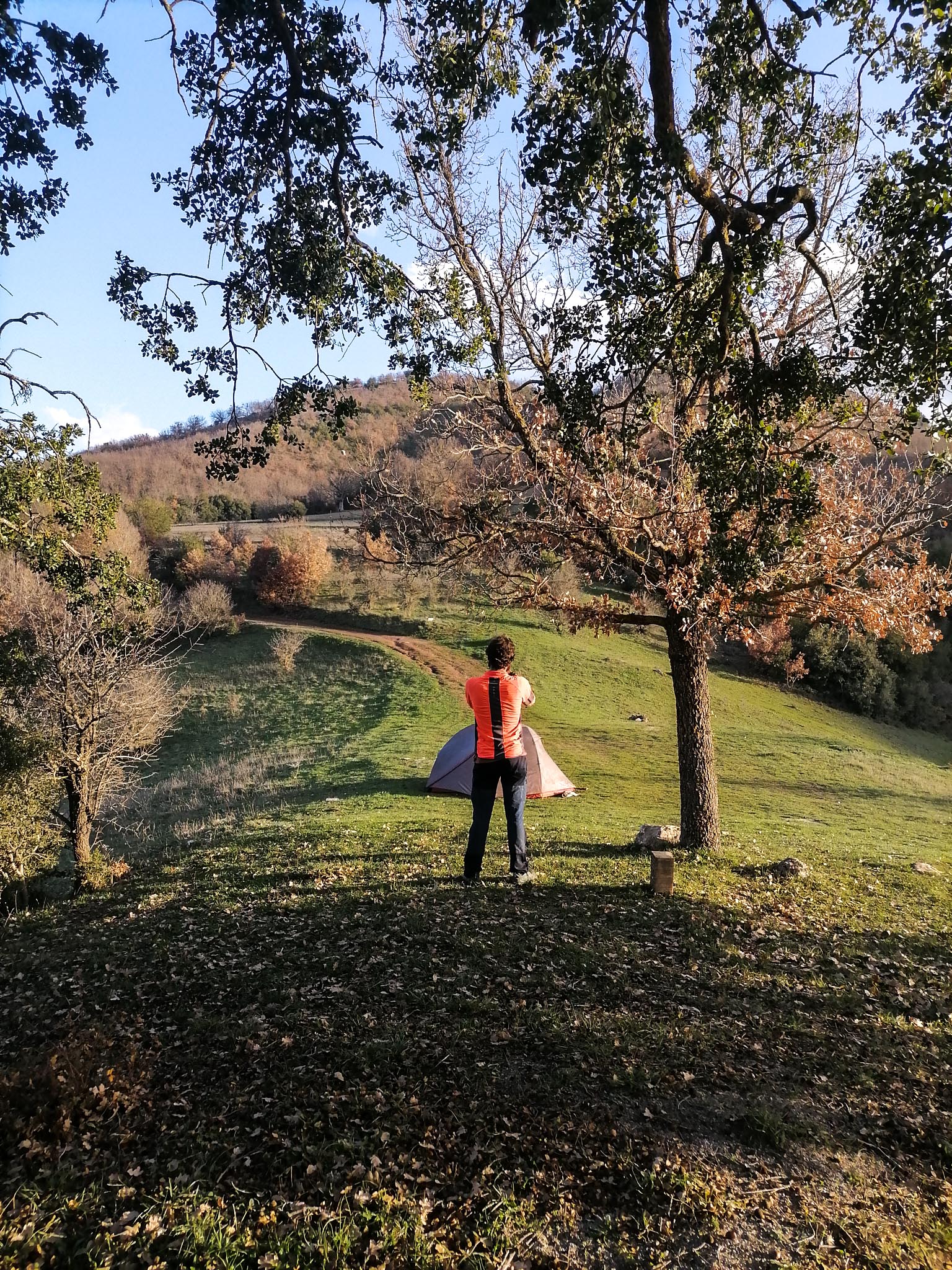
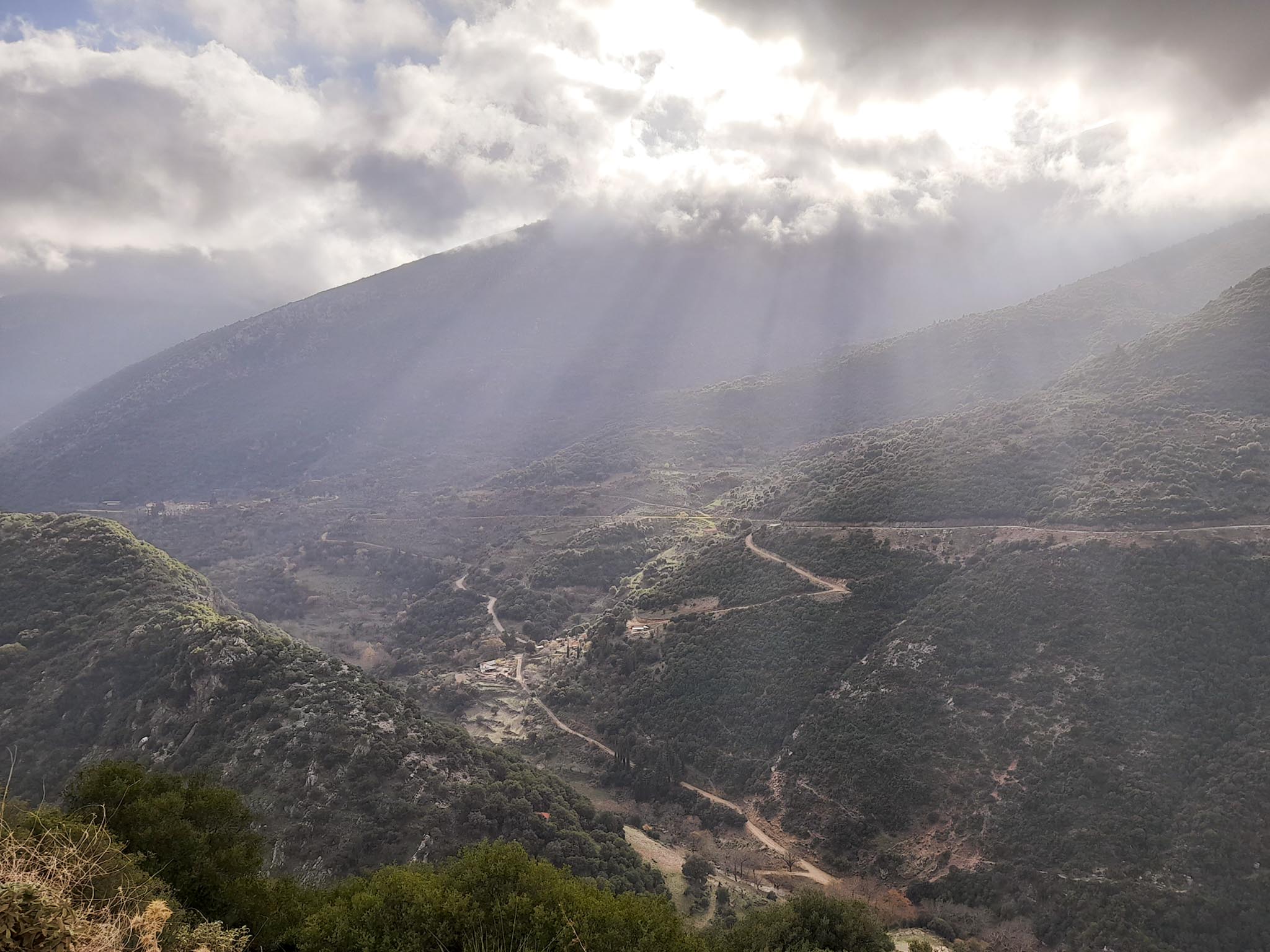
After three days to roll on these deserted and magnificent roads, but demanding for the calves, we approach Kalamata. We go down again in the plain and we cross the coal mine of Megalopoli. Some spaces, whose exploitation is finished, were renatured. While we usually try to understand the landscapes that surround us, by observing the reliefs and the rivers, or the changes of vegetation, here we are completely perplexed. Everything seems completely artificial: nothing makes sense. A uniform and soulless vegetation spreads on sad hectares of embankments, in the middle of abandoned houses. The active part of the mine is an even more desolate sight. From the road that runs along the gaping hole, we can see the huge trucks that descend along a winding road. Everywhere around us, the ground is bare, without us perceiving where all this can stop. The road is as flat as it is straight, so that we know the horizon before we reach it by bike. It is good that we are sorry for the landscape, otherwise we would be bored.


After a final climb at a good pace, the view opens up abruptly on the plain north of Kalamata. Before our eyes spreads a sea of olive trees. Some variations in the colors of the leaves, between gray, blue and green. Plots of land in perfect alignment, others with a more fanciful layout. But above all, an agricultural uniformity that would make the Beauce look like a varied landscape. The road goes down in some nicely drawn laces and we find ourselves in the middle of the trees. In view of the ambient smell, Maryam does not resist long before entering a cooperative. She comes out with a bottle of 50cl filled with a very fresh oil, offered by the producers. The planned route makes us make a lot of detours to avoid the big road where tractors are circulating. But well, the landscape is rather monotonous and it is sometimes rather tiring to take out the phone at every intersection to consult the map. Then, we cut to the shortest: we put one behind the other on the right of the national, we put the chain on the big plate, we lower the head, and we pedal. We put a little time to find our pace but, once the 27 or 28 km/h reached, we feel unstoppable. After an hour of riding well, we realize that it’s good for us to get back to this kind of effort, which also corresponds to what we like in cycling.
Once the city of Kalamata reached, before the usual detour by the Lidl of the corner, we are going to settle on a pier not to arrive too early at our host. We observe amused a family all prepared to take the break under the instructions of a photographer who, it is necessary to recognize it, chose well his hour. The golden light on the port is beautiful. Arrived at Yorgos, we take a shower and we launch a machine before settling down around a card. Yorgos is a professional organizer of bicycle tours. He prepares itineraries on several days for tourists, often American and knows the corner like his pocket. He advises us on the route to follow and the places not to be missed, succeeding in dissuading Luc from opting for the mountainous route to Sparta: “people come from all over the world for this coastal route, it would be a shame to miss it…”. Once the route to Athens is planned, it’s up to us. Yorgos is used to organizing tours outside Greece, in Italy and Morocco in particular. He would like to extend his activity in France, by proposing a trip from Geneva to Avignon. It falls well, we pedaled a lot in the corner. We spend then a long time around a map, to advise him our blows of heart, in the Vercors and the Diois notably, and to build with him a very nice itinerary!
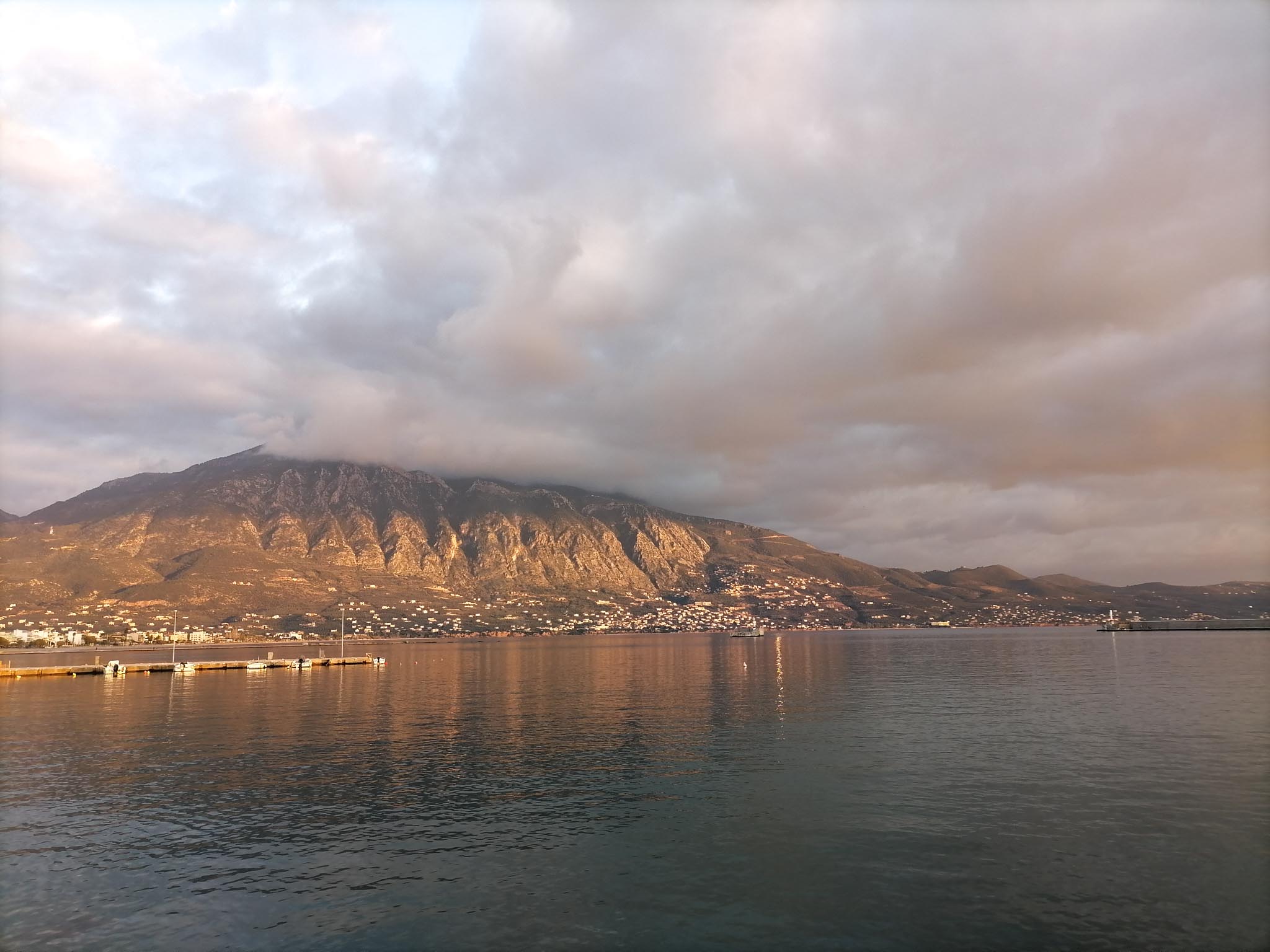
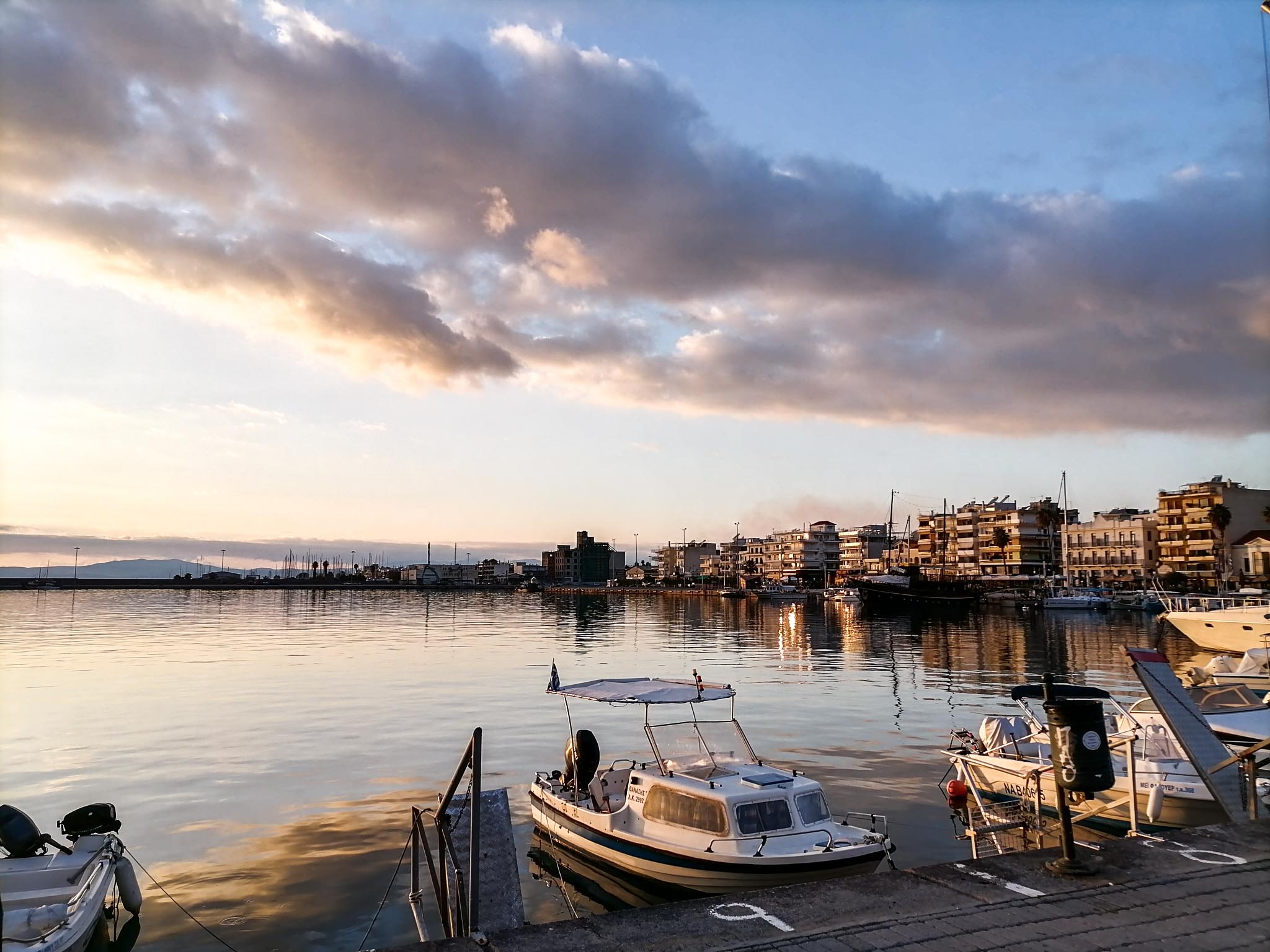
On the roads of Magne
It is all clean and rested that we leave then towards the south, and the exploration of the peninsula of Magne. Yorgos was well right, the coastal road is splendid. It does not cease going up and down, to move away a little from the sea for better approaching some kilometers further, by offering each time more incredible perspectives the ones than the others. Once out of the city, the traffic is non-existent, and we have perfect roads for us alone: a paradise for the cyclists. We settle down for the first night in a rocky creek where, in spite of the appearances, the folds are not the work of the man. The summer, it is a nudist beach; the winter, an ideal place of bivouac. The access is really not obvious, and we have to take down the bikes and the panniers separately. Under the advice of a Belgian crossed on the spot, we leave to explore a cave in the immediate proximity. Armed with our headlamps, we sink on 200m in corridors which go down in soft slope. According to Wikipedia, the cave is more than 2km long but we had neither the equipment, nor the experience to explore it more deeply.
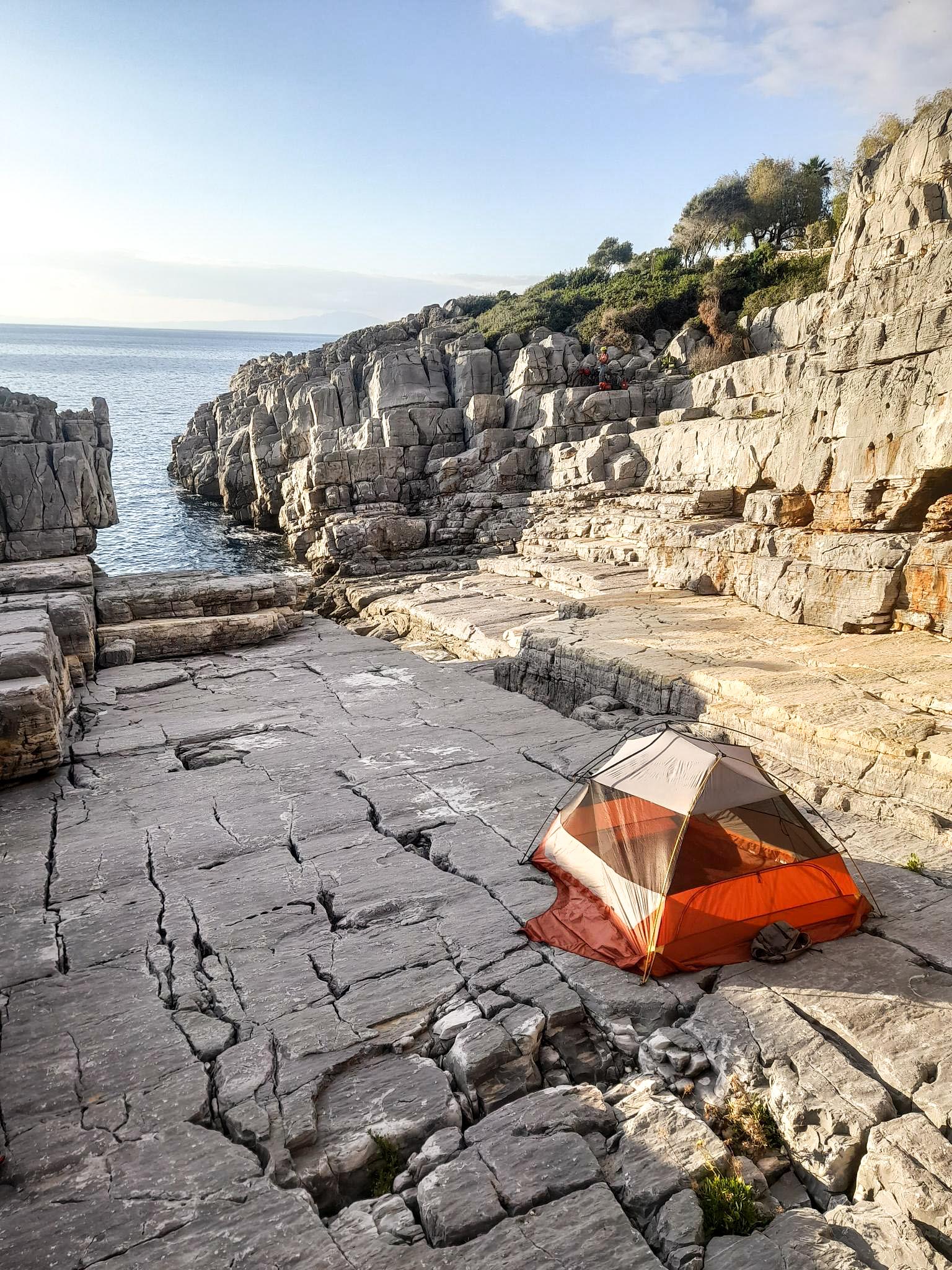
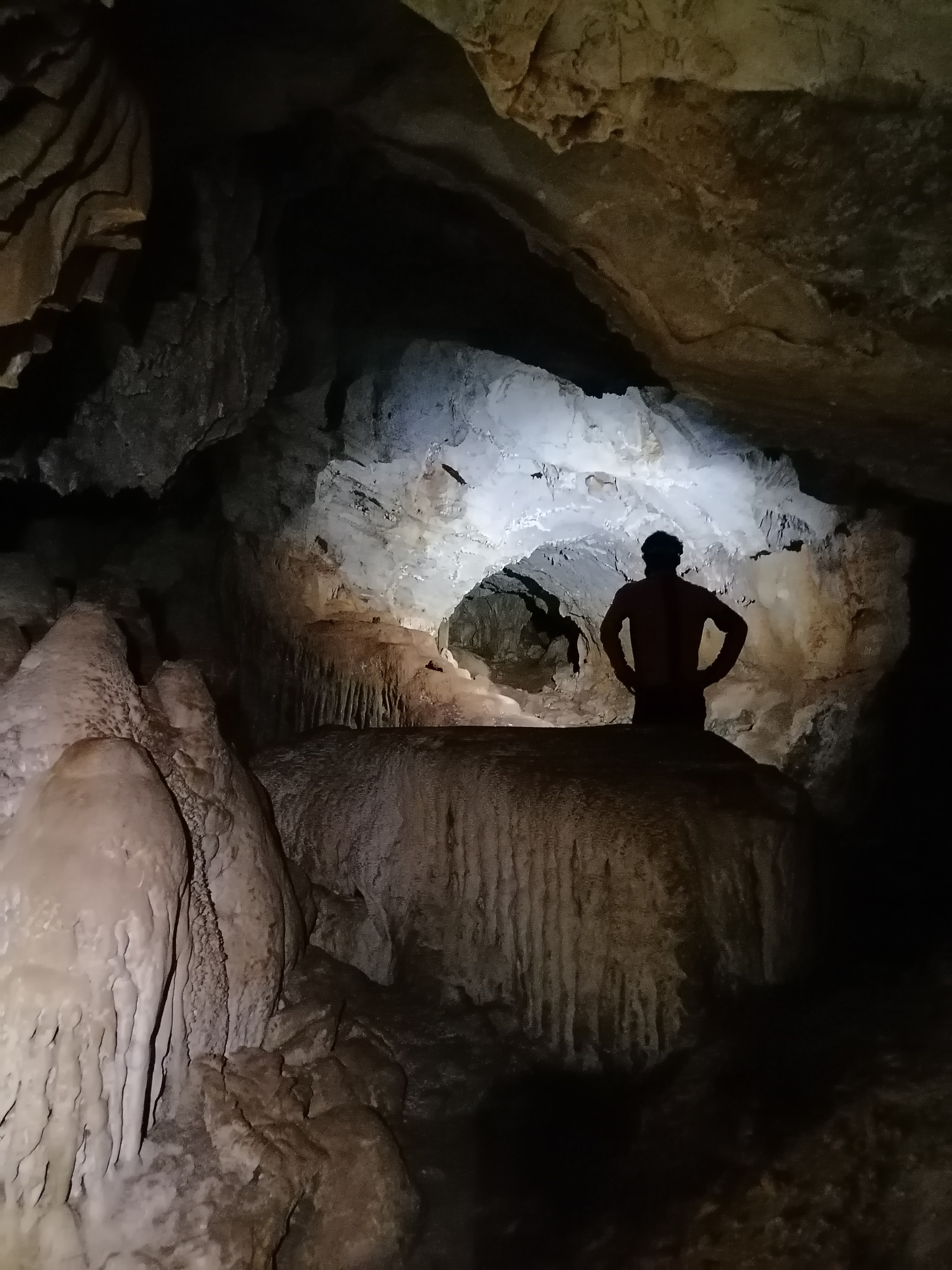
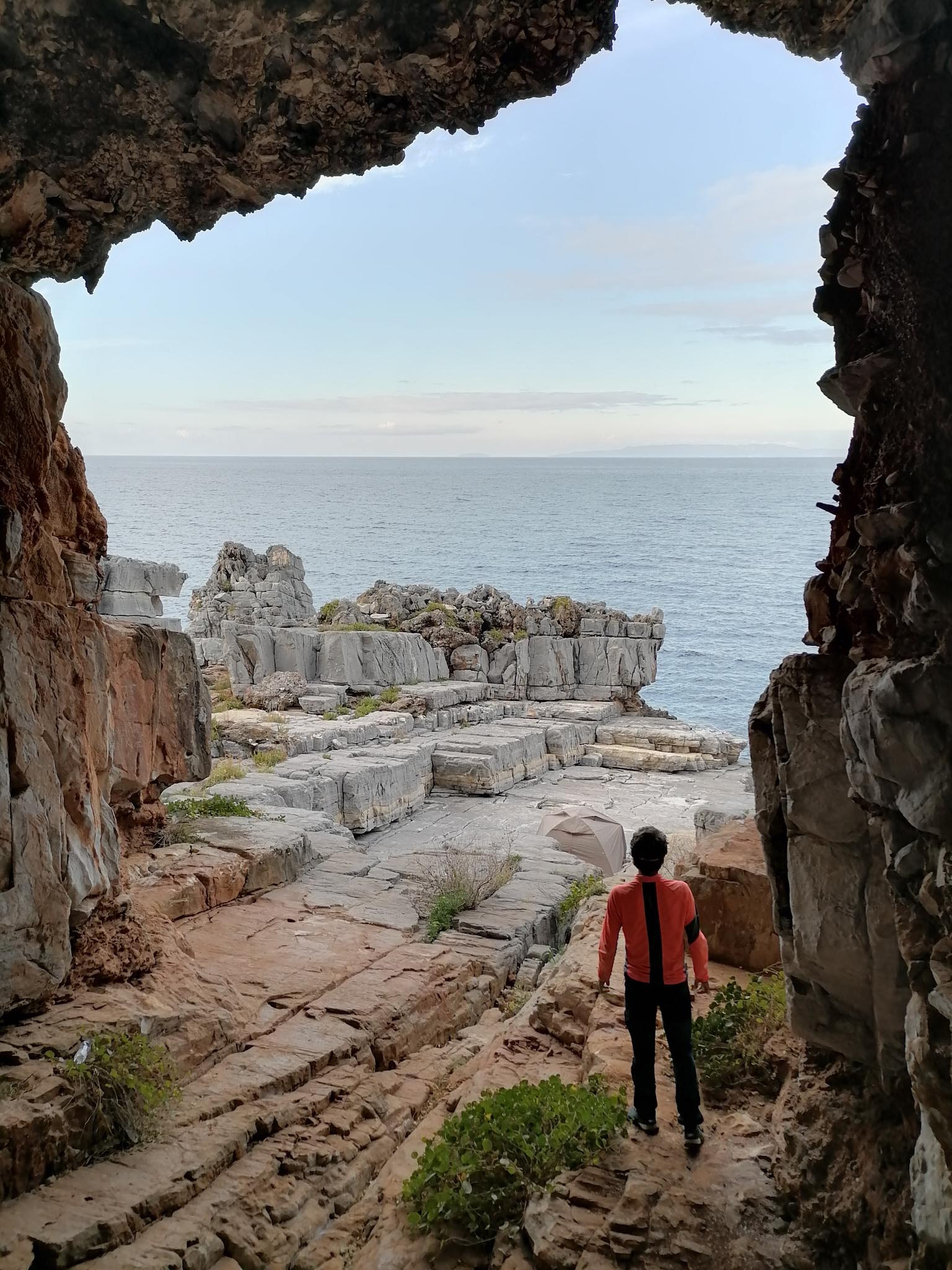
During a few days, we continue our road on this peninsula, in direction of the Cape Tenare. We discover the Byzantine architecture, omnipresent in the villages that we cross. The old stone buildings are a condensation of geometric forms. The structure is often cubic, with symmetrical arches, and often crenellations at the top. The modern imitations, although factually in the local juice, seem to us less successful and clash with the rest of the buildings. The cycling paradise continues: the roads are always as beautiful as deserted. We easily find picnic tables with sight on turquoise waters for our lunches and the bivouacs are childish to find. We regularly find ourselves to sleep on the beaches where, height of the luxury, we can use the showers. After a bath of sea to put in temperature, we take advantage of the found habit to be all clean, almost every day. When the beach is sandy, we sleep well, lulled by the sound of the sea. When it’s pebbles, it’s a bit more complex: because of a chronic defect on the model of our decathlon mattresses which leak from everywhere, we often find ourselves on the ground. For Maryam’s, we managed to limit the damage with an army of patches. For Luc’s, the repair attempts failed and he has to put a lung shot in the valve every two hours.

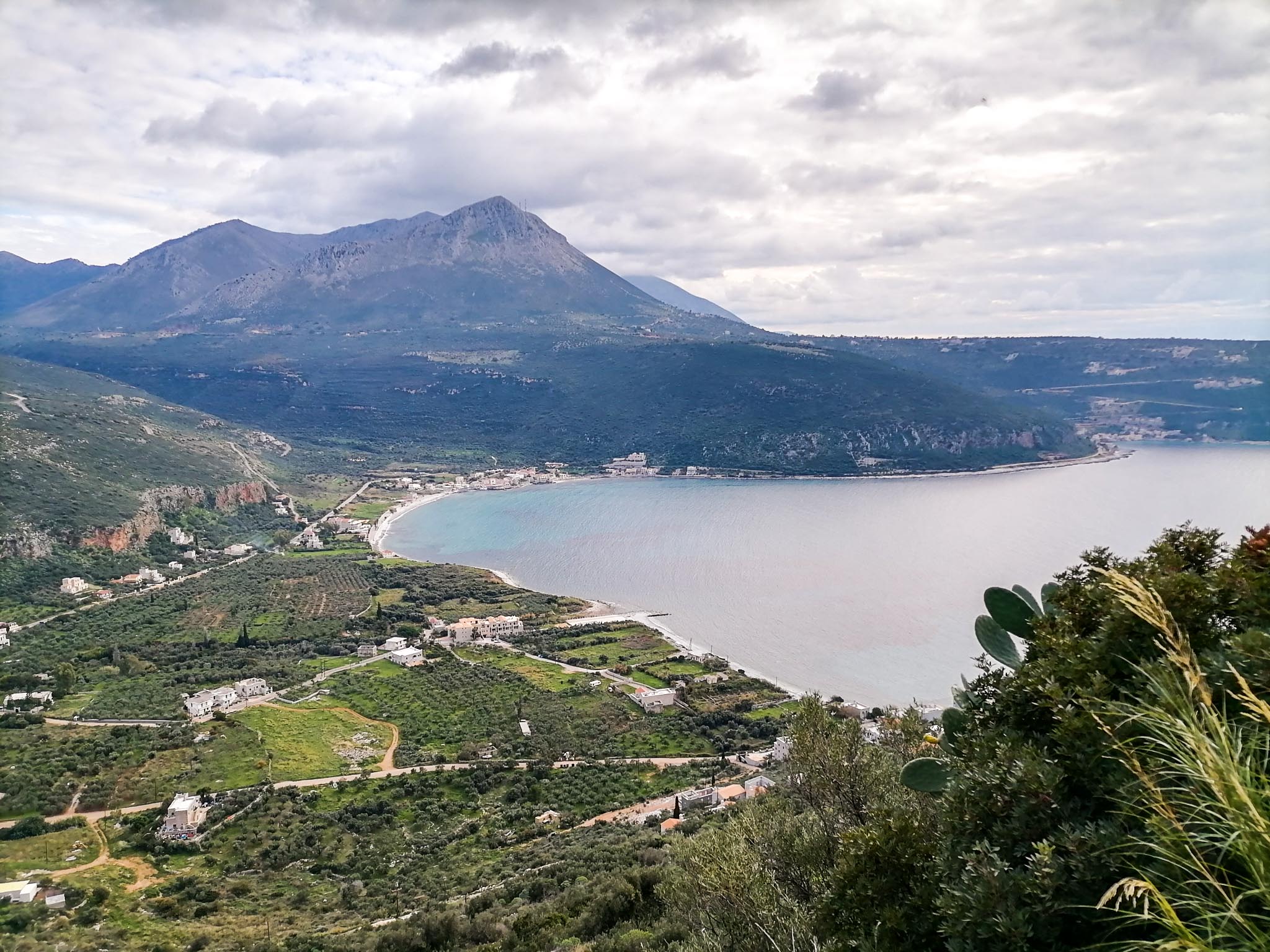

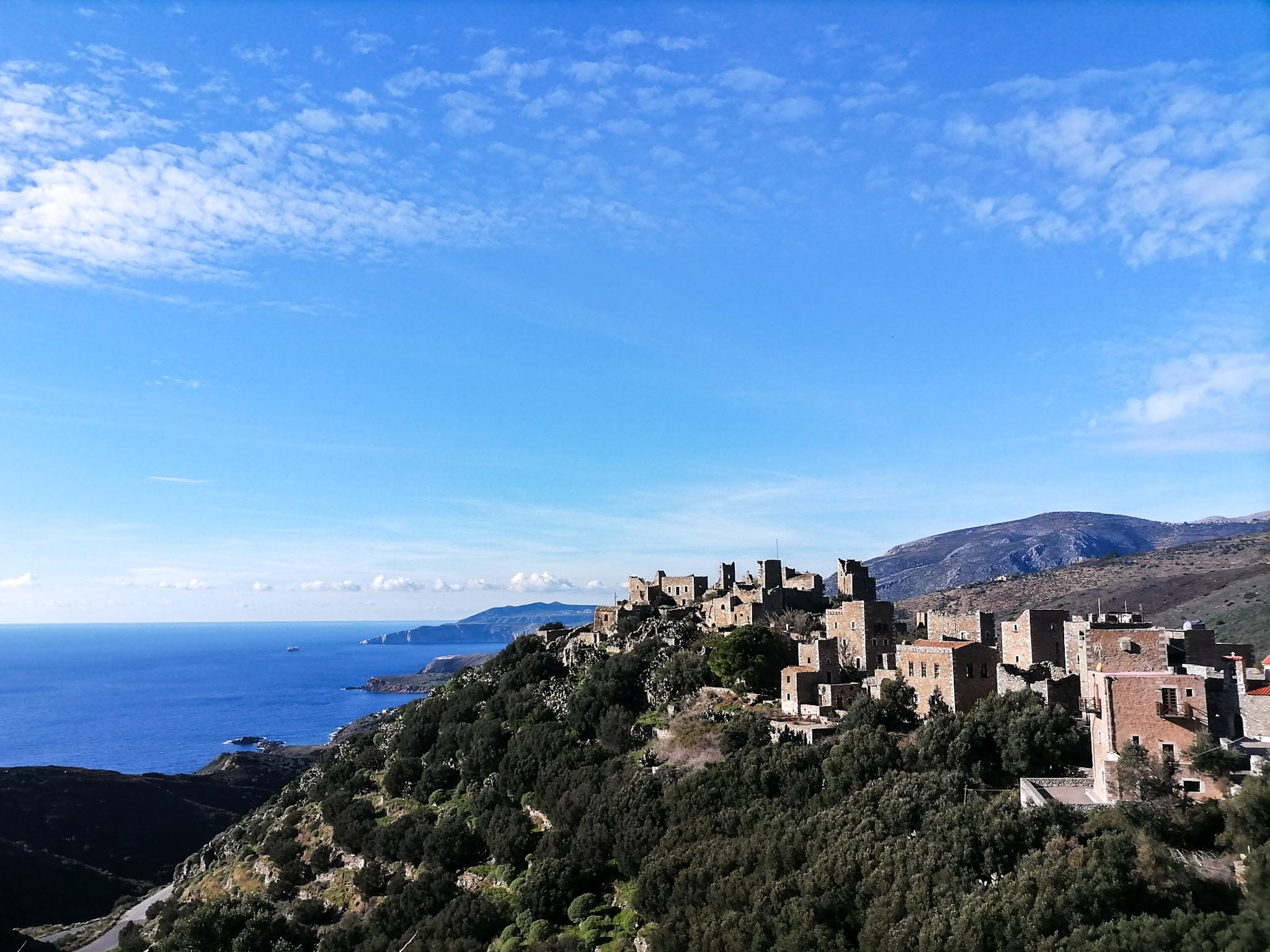
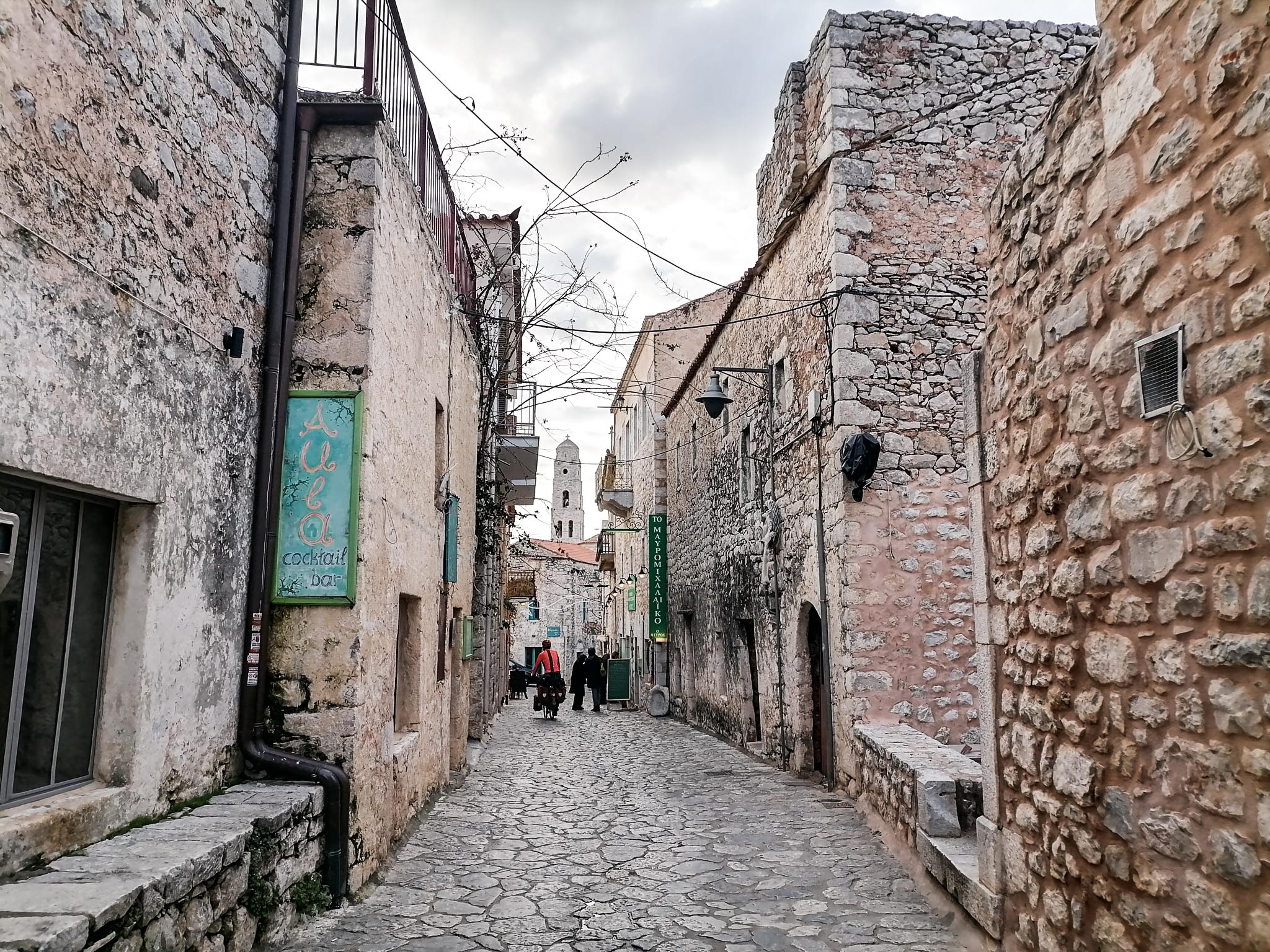
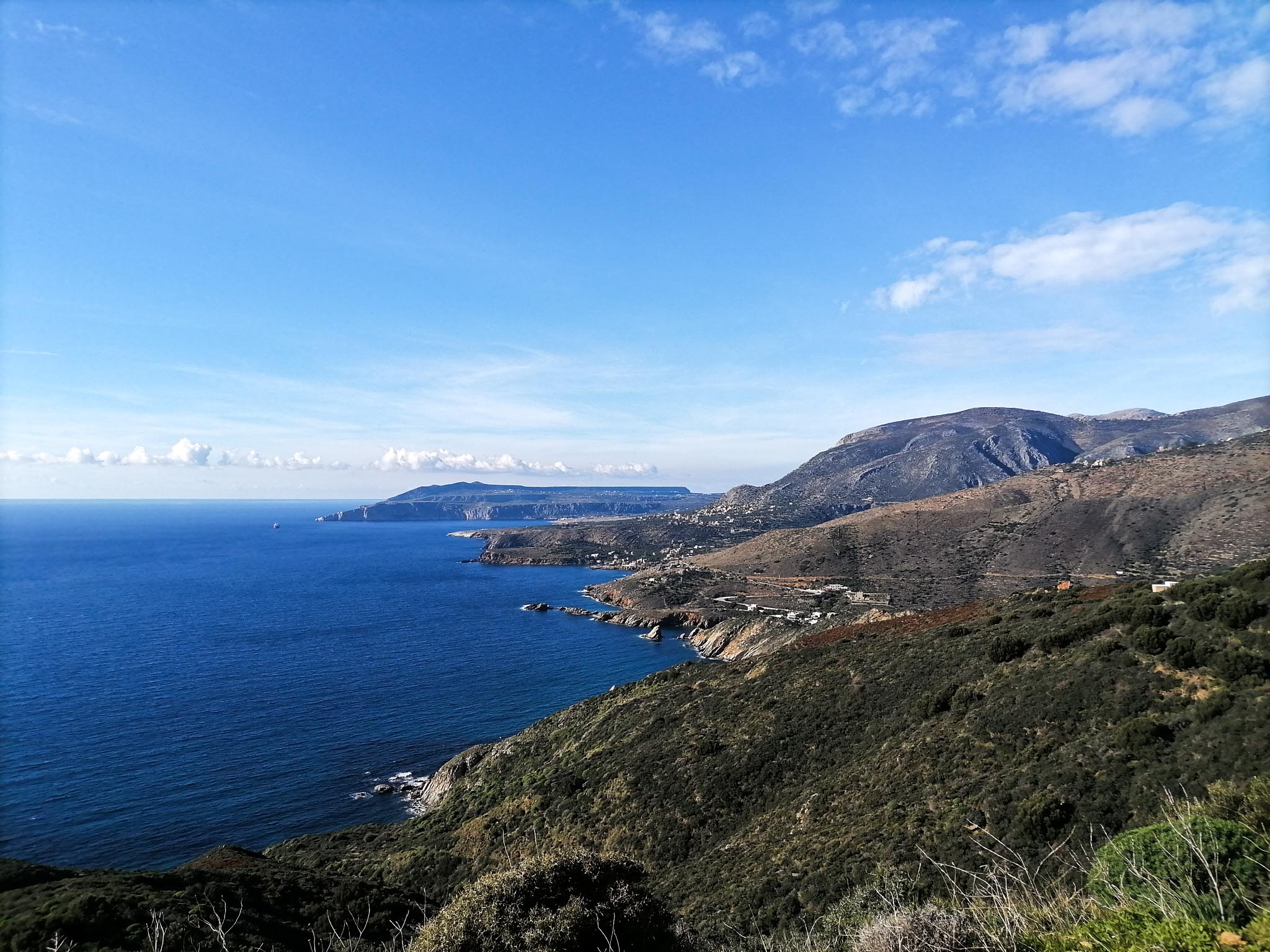
The weather continues to be perfect: with 15 to 20°C during the day, we pedal in t-shirt. We also take advantage of the clear skies and the absence of cities around us to initiate ourselves to the observation of stars and planets. With the naked eye and with the help of a map, we train every evening to recognize and name more elements of the sky, while trying to understand how all that moves. We must admit it, we are rather proud of our progress! We spend Christmas at the “end of the end” of the peninsula, on the last beach before the Cape Tenare. Pasta with pesto then we go under the tent: a dream Christmas Eve!

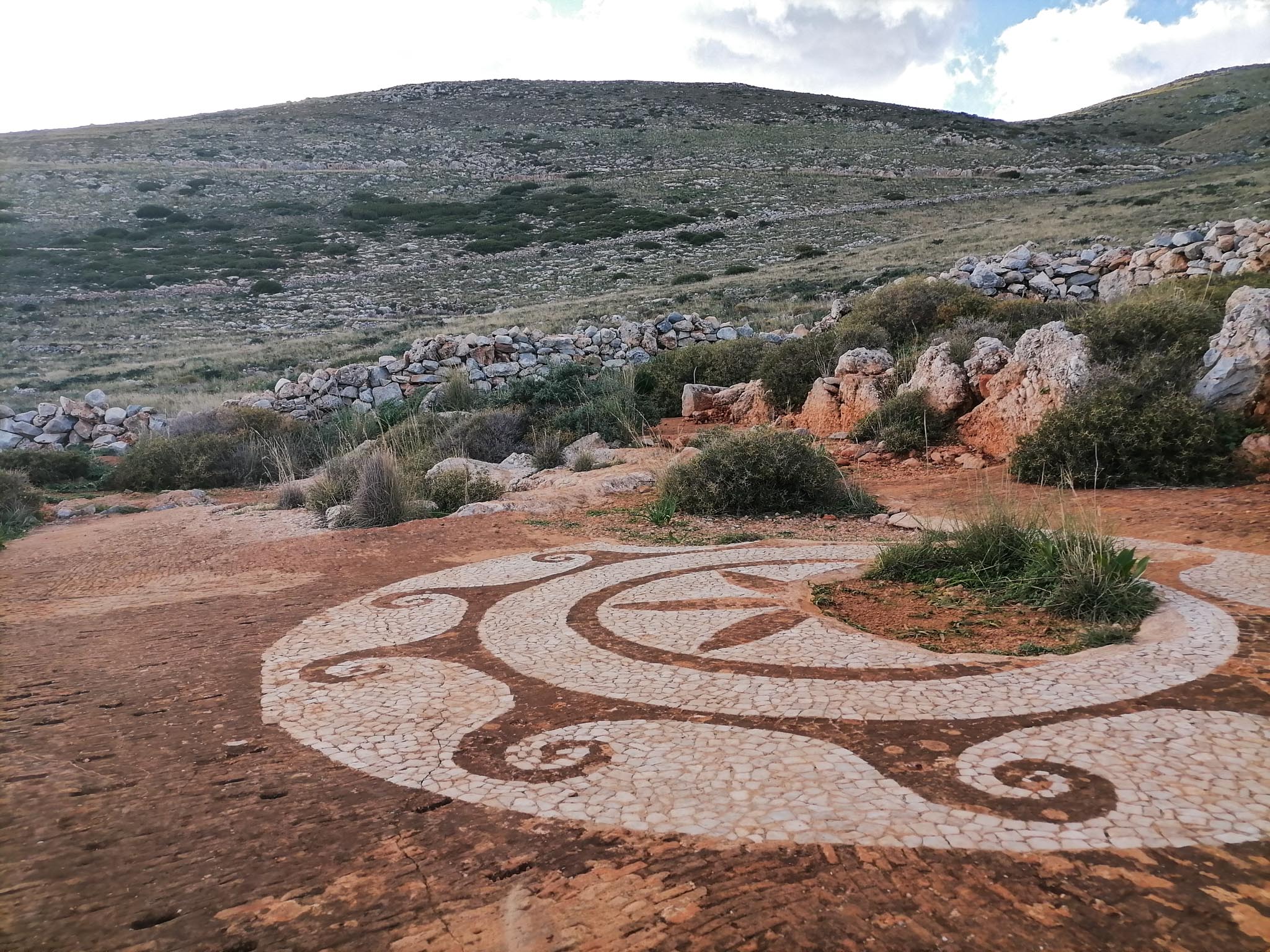

A new peninsula
As we cannot go any more to the south, we attack our ascent towards the north, in conditions always so ideal. One evening, we even find a bivouac which is in itself a summary of all our previous bivouacs: on a peninsula just for us, next to a chapel, in the middle of olive trees. By arriving towards Gythio, we find some kilometers of plain, favourable to the culture of oranges. We spend there an agitated night on a beach because of the sound device moving away the birds from the orchards: a (false) shot every two minutes!
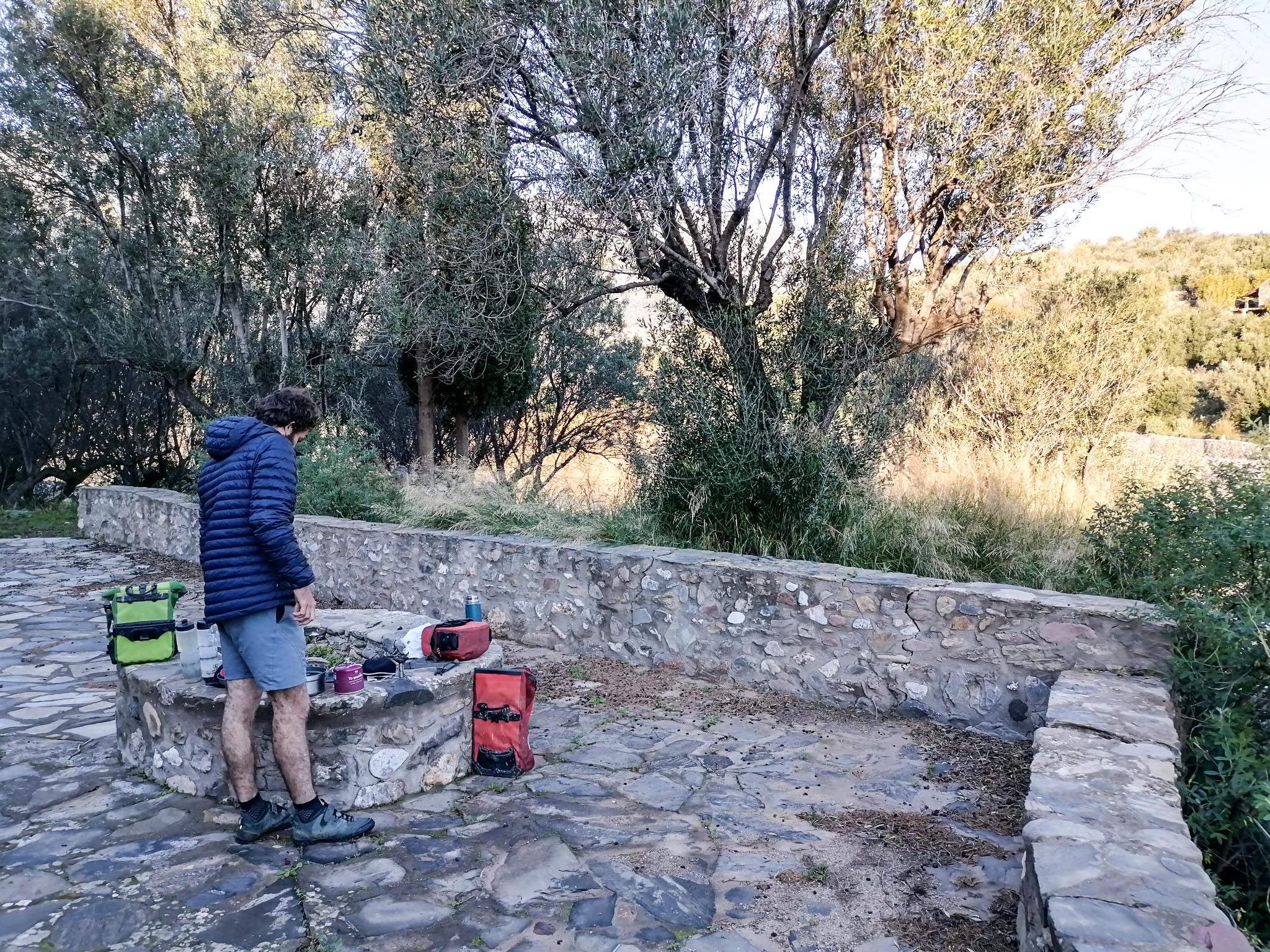

On the parking lot of the Lidl of Skala, we meet two Breton cyclists, who come back from Crete, on the return of their European tour. We meet them again the next day when we visit the city of Monemvassia. We enjoy walking through the streets of the fortified city, built at the foot of a rock. It was for a long time a commercial center of wine export, being controlled by the Venetians. Today, the series of narrow passages between the houses made of light-colored rocks attracts many tourists. A pathway allows you to climb to the top of the cliff and enjoy the view of the city, directly on the sea.

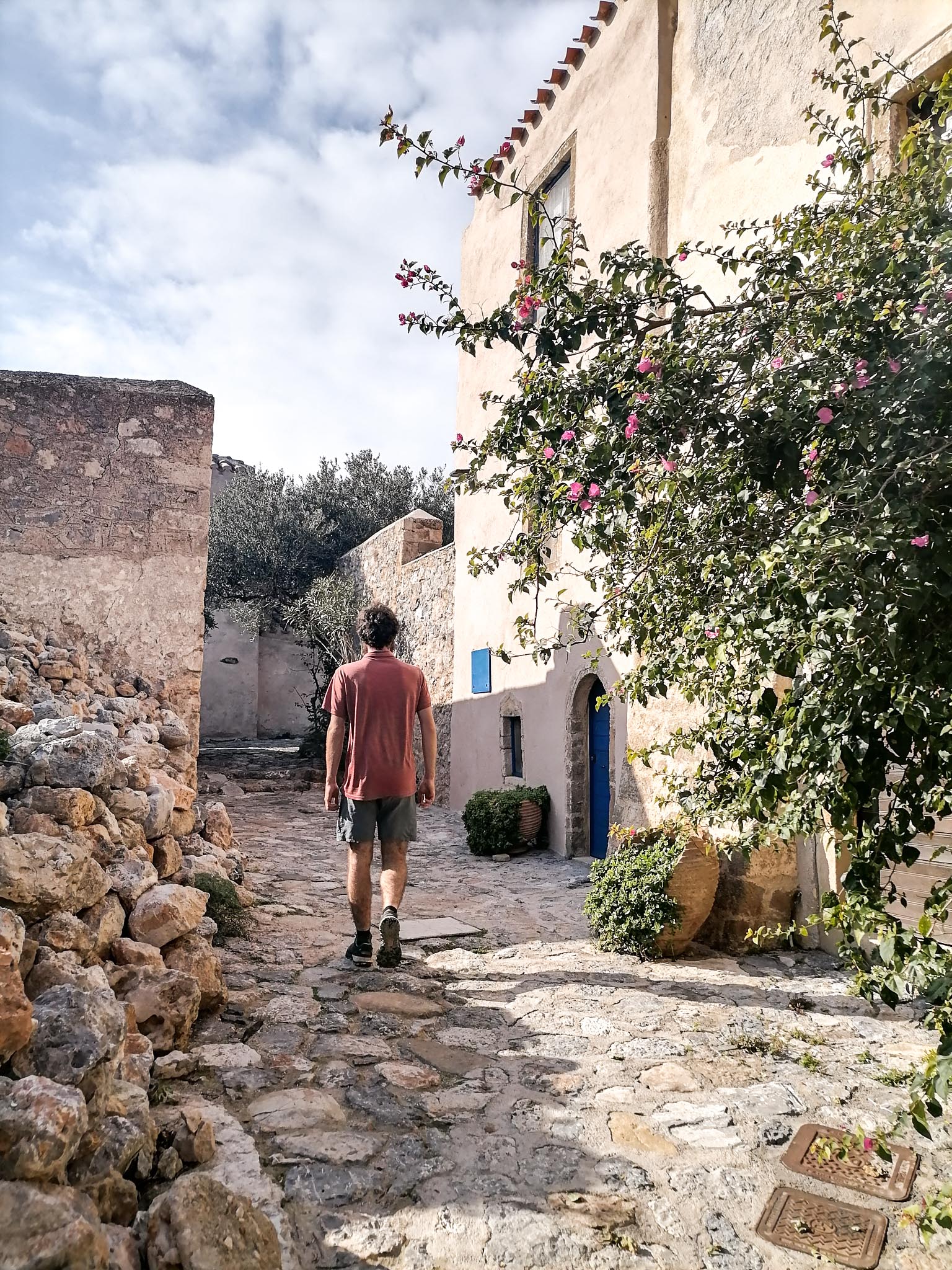


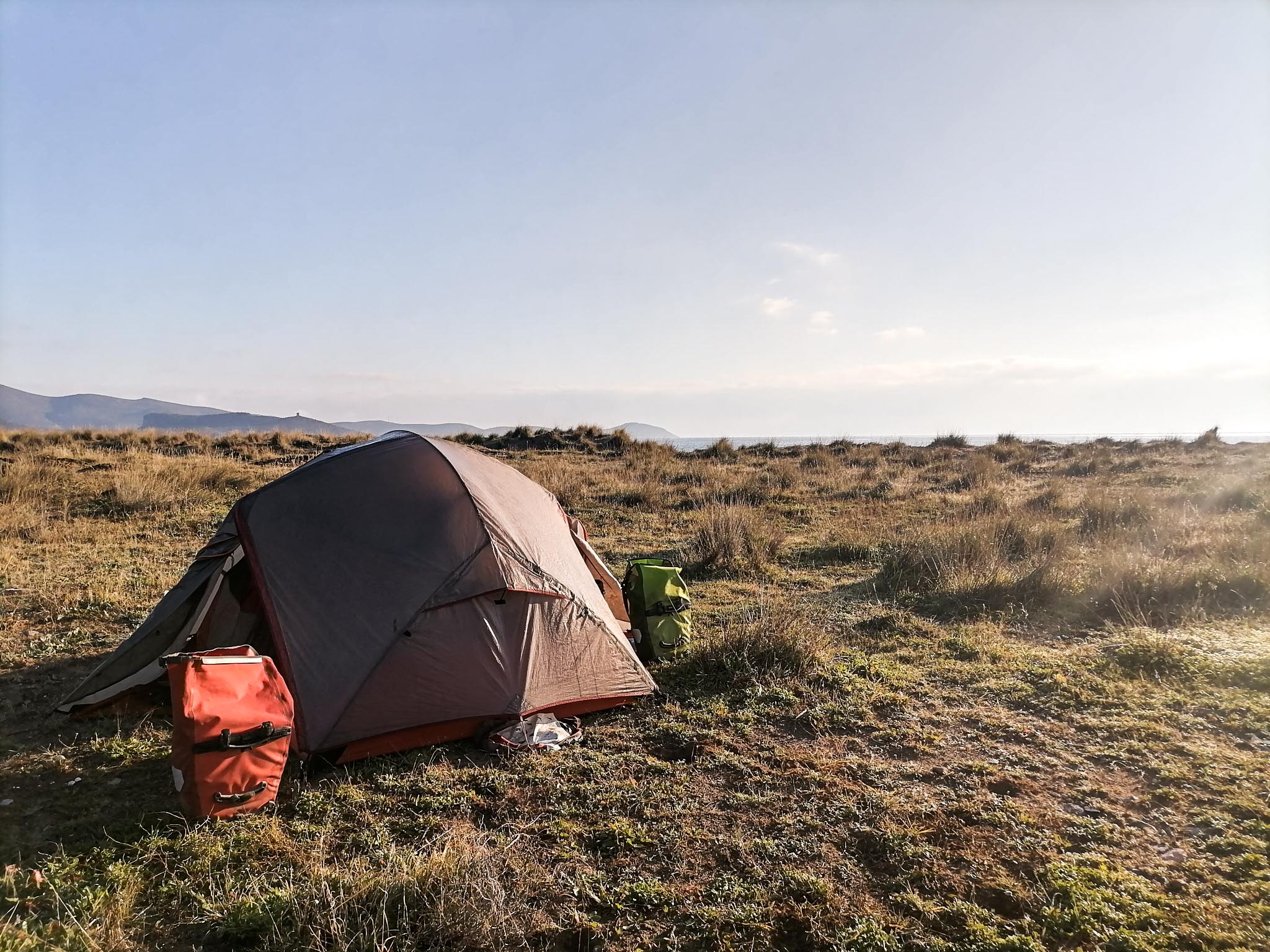
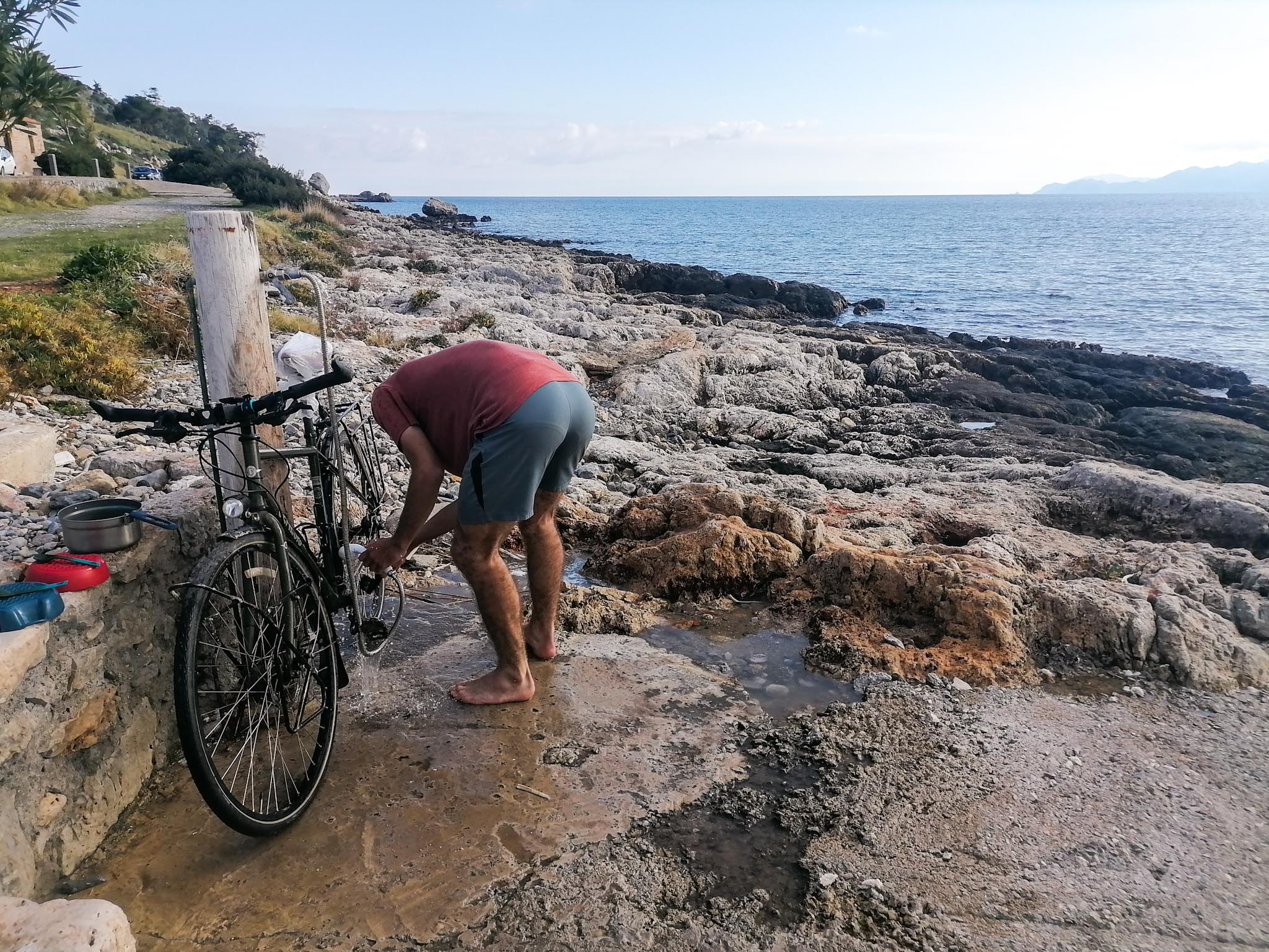
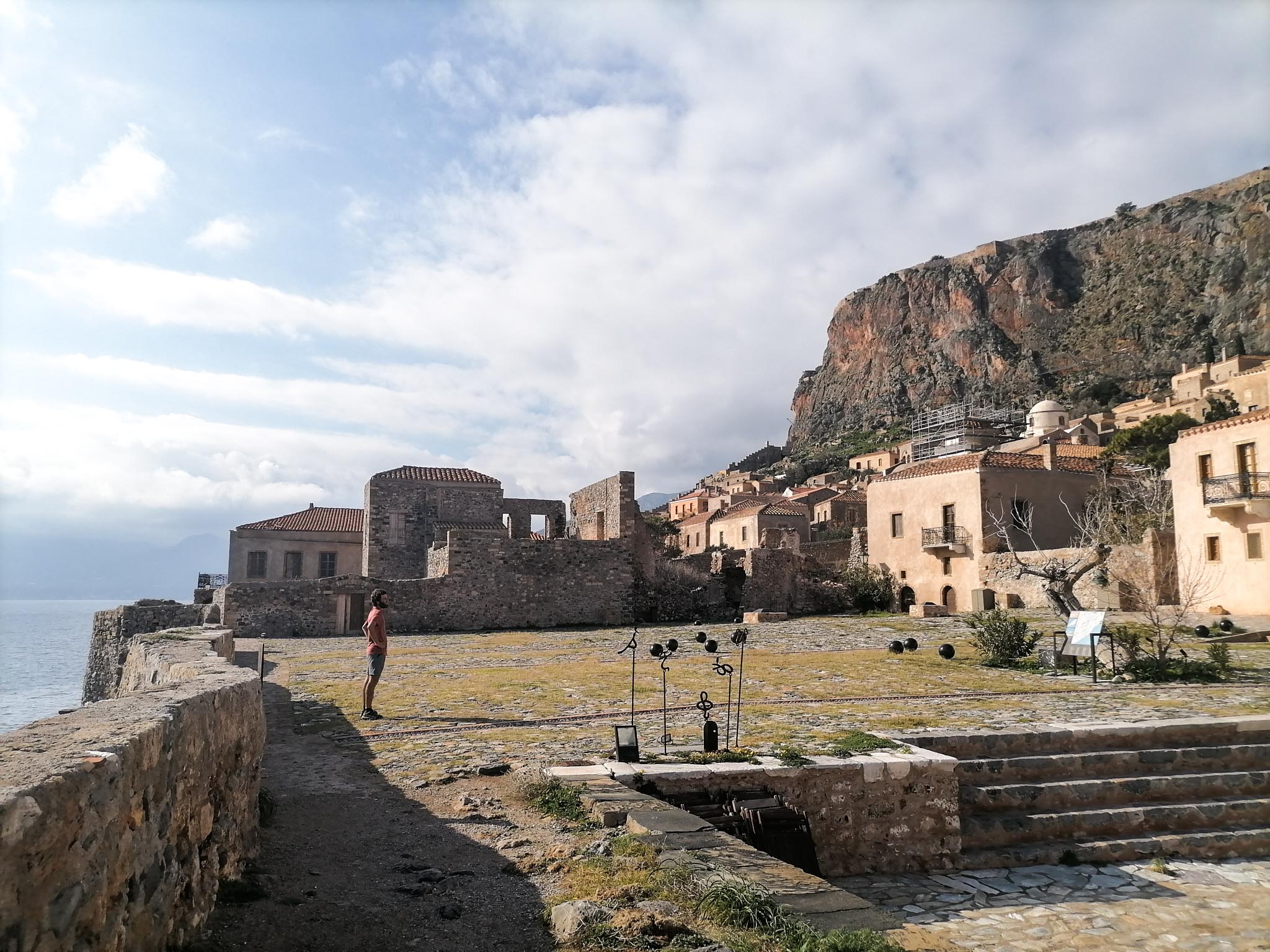
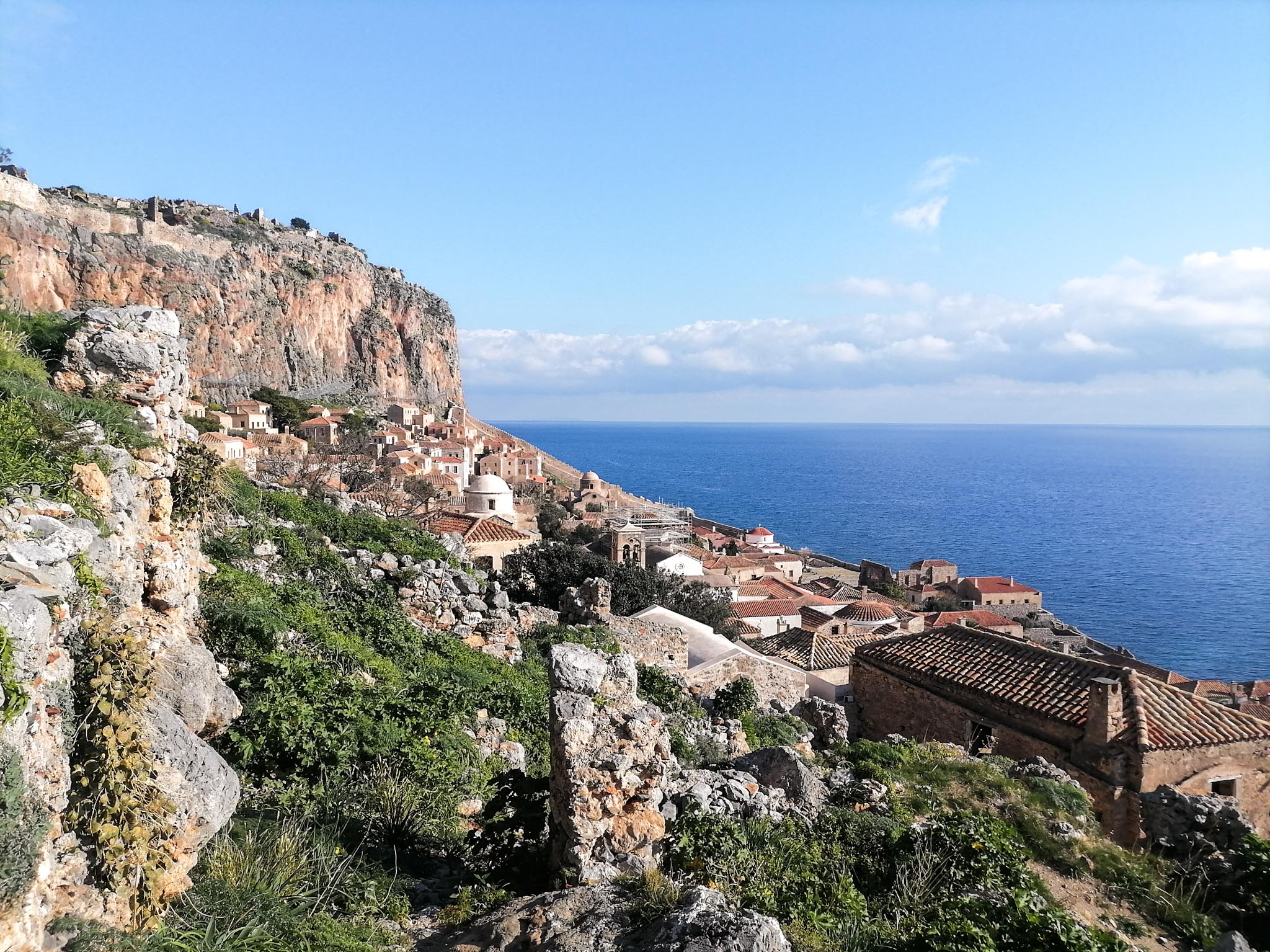

At this stage, we have to reach Argos. We have two choices: we can deviate from the coast to avoid the difference in level but the coastal road and its 3000m of D+ looks splendid. Moreover, the camera of Maryam is always in repair, and we have to take time not to arrive too early in Athens by hoping that it is ready when we arrive. We opt for the mountain: a choice that we do not regret. The roads are even more deserted than usual. During 2 days to climb we cross hardly some thin tens of cars. At the top of a hill, while we make a pause on a bench, we see landing two cyclists. They are two Slovenians who are on vacations in the corner, and who radiate in the day around their accommodation. On one of the bikes, Luc quickly spots a model of brake caliper which interests him on their bike: all happy, he is proposed to try it. With a bike 4 times lighter than the one he is now used to, he feels like flying! We go down then on Leonidio by a vertiginous road, and we settle down on the beach. We verify there what two German climbers met some days earlier had explained us. The cliffs of Leonidio are very famous for the climbing. Climbers come from all Europe to climb there and, the local custom wants that every group installs its camper or its fitted out van on the beach, between the police station and the campsite, under the sign indicating that it is forbidden to do so. Apparently, this is tolerated. We must admit that the atmosphere is quite nice: people settle here for the whole season and get to know each other. In the evening, the Spanish climbers invite their Swiss counterparts in their van and, in the morning, the beach is full of German climbers doing their yoga in the sun.
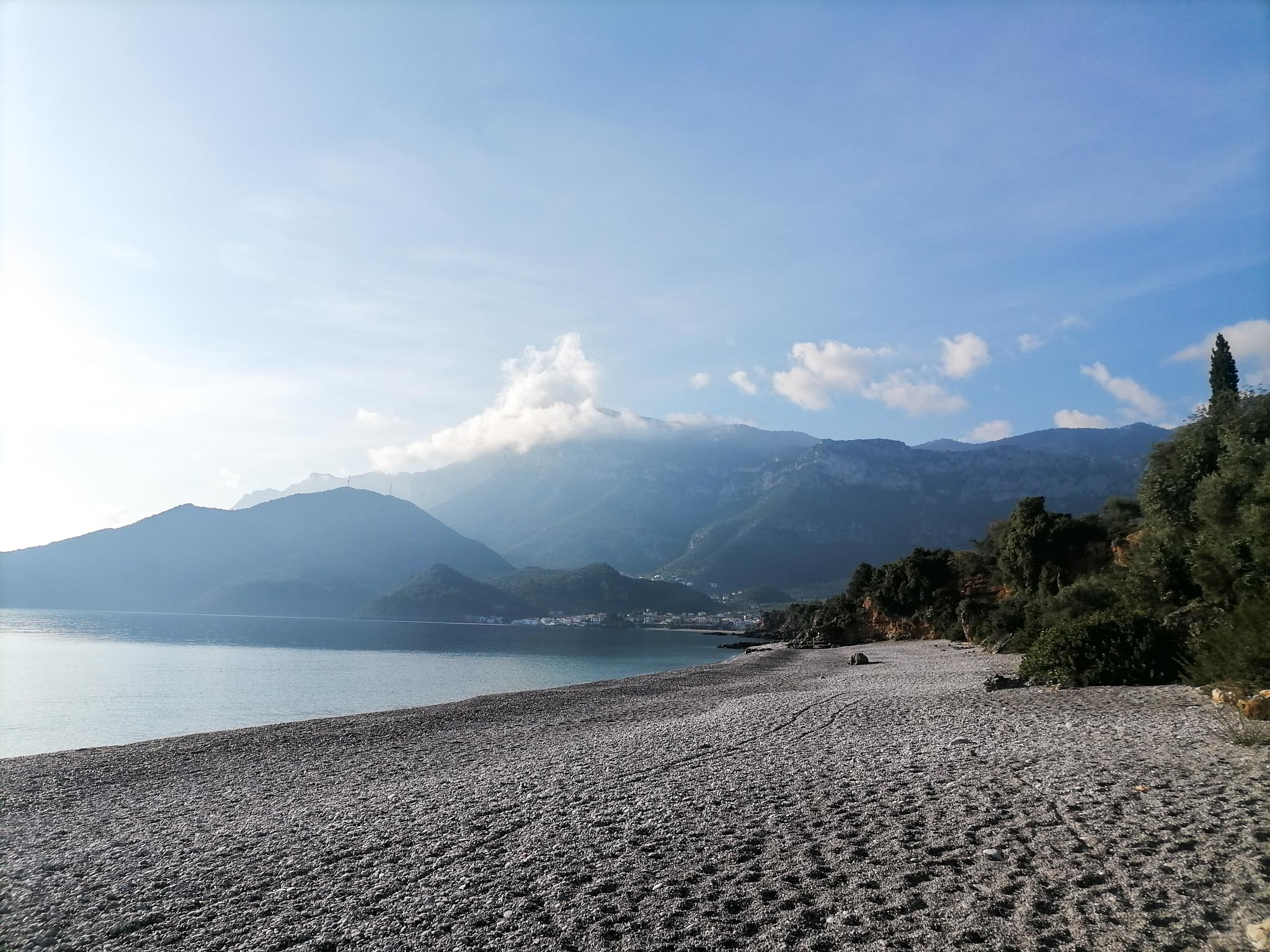
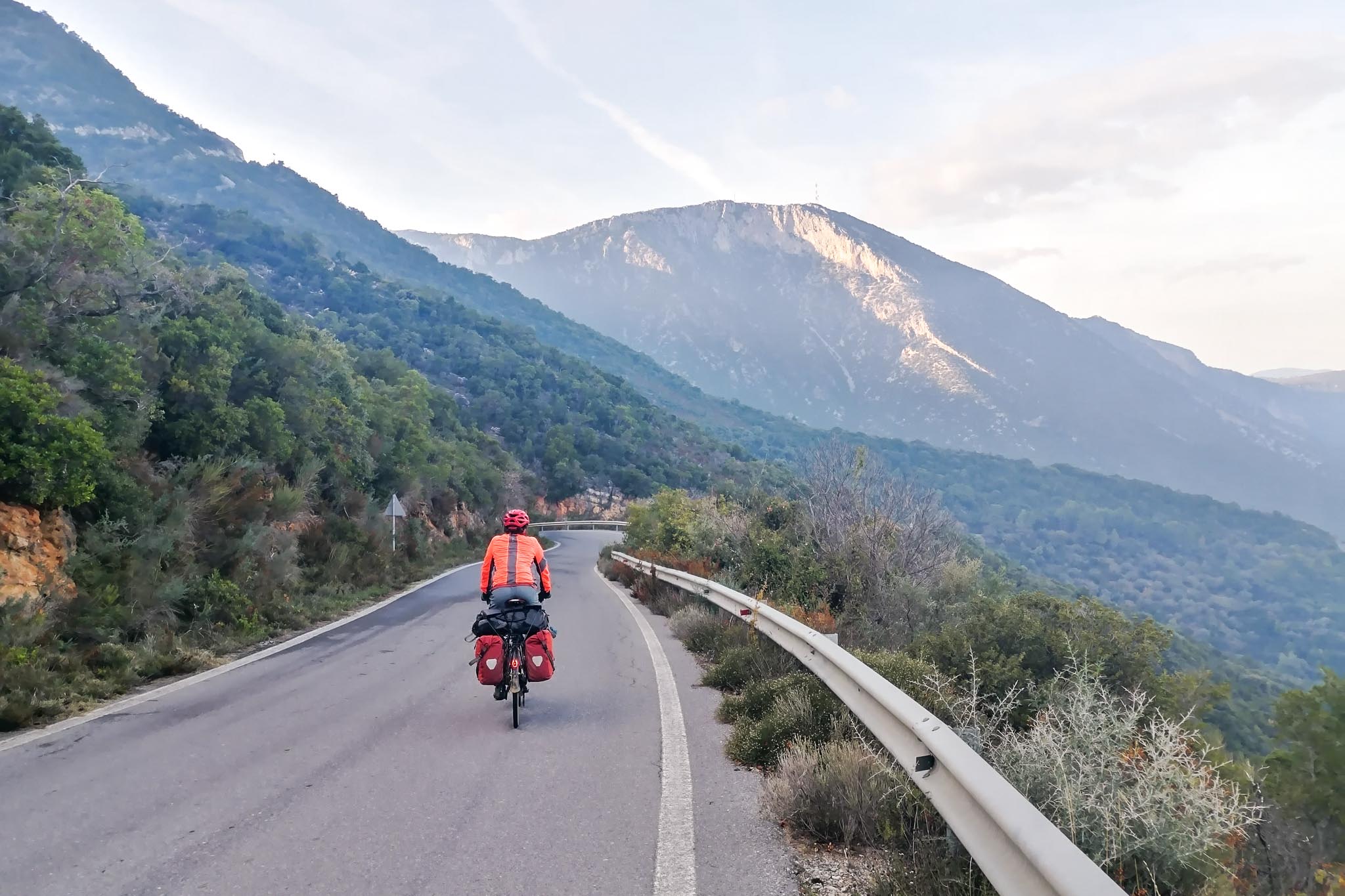

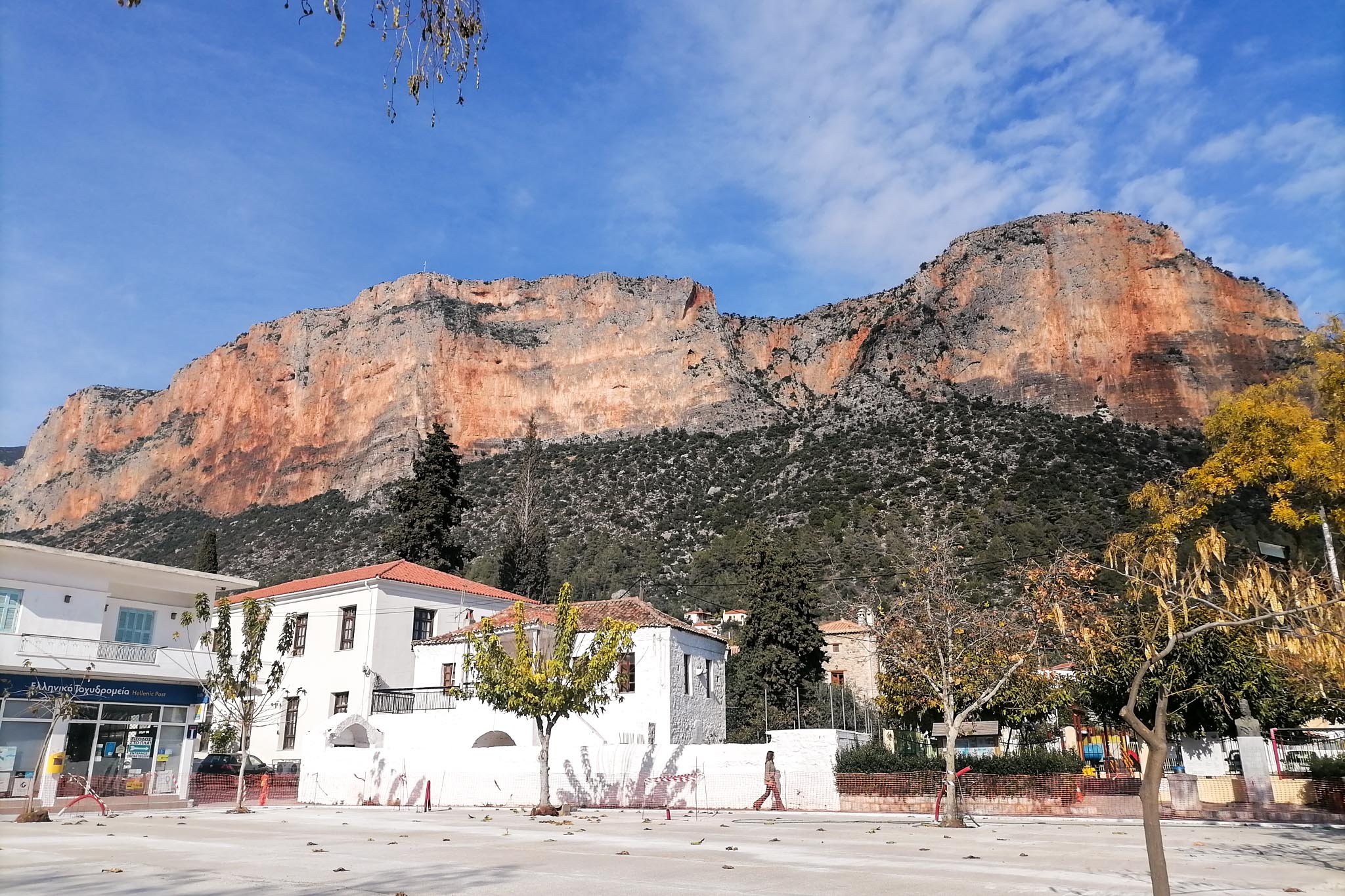

We continue our road towards Argos, on a section a little flatter than before. The traffic increases little by little, while remaining quite reasonable. We were often told that the entrance in Athens is particularly not adapted to the cyclists, then we planned to take a train from Corinth to join the capital, what we make after a last bivouac under a freshly restored ancient bridge, that we have fun to climb. During this stage, the landscape changes: finished the olive trees, place to the orange trees!
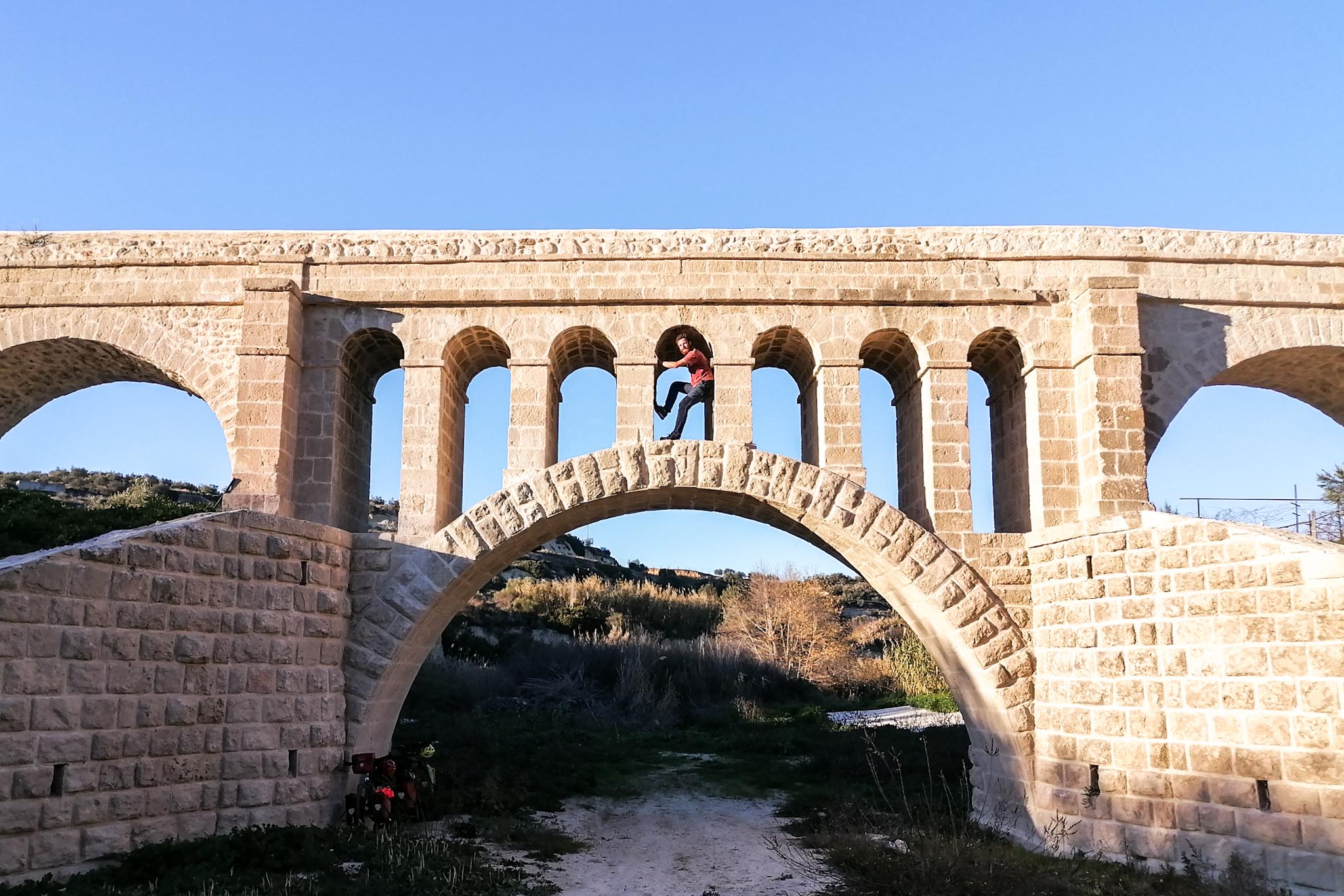

Short stay in Athens
We spend then two days in Athens, by staying at Nikitas, who welcomes us superbly at his place. During this short stay, we cross the city in all the directions, to recover various parcels which we had sent, as well as to buy what we miss. Luc can finally change his tires as well as his mattress, and we find what to try a repair of his rear fender, cracked on all the width. We also receive our “USB-werk”, which allows us to recharge phones from a dynamo in the hub. This device had failed us on the second day of our trip, under the rain of the Lautaret pass. It took almost three months to send it back to the German company, to receive it in France and finally to get it in Greece. In the meantime, our solar panel, well helped by the sunshine of the last days, was doing the trick, but this extra power will be welcome!

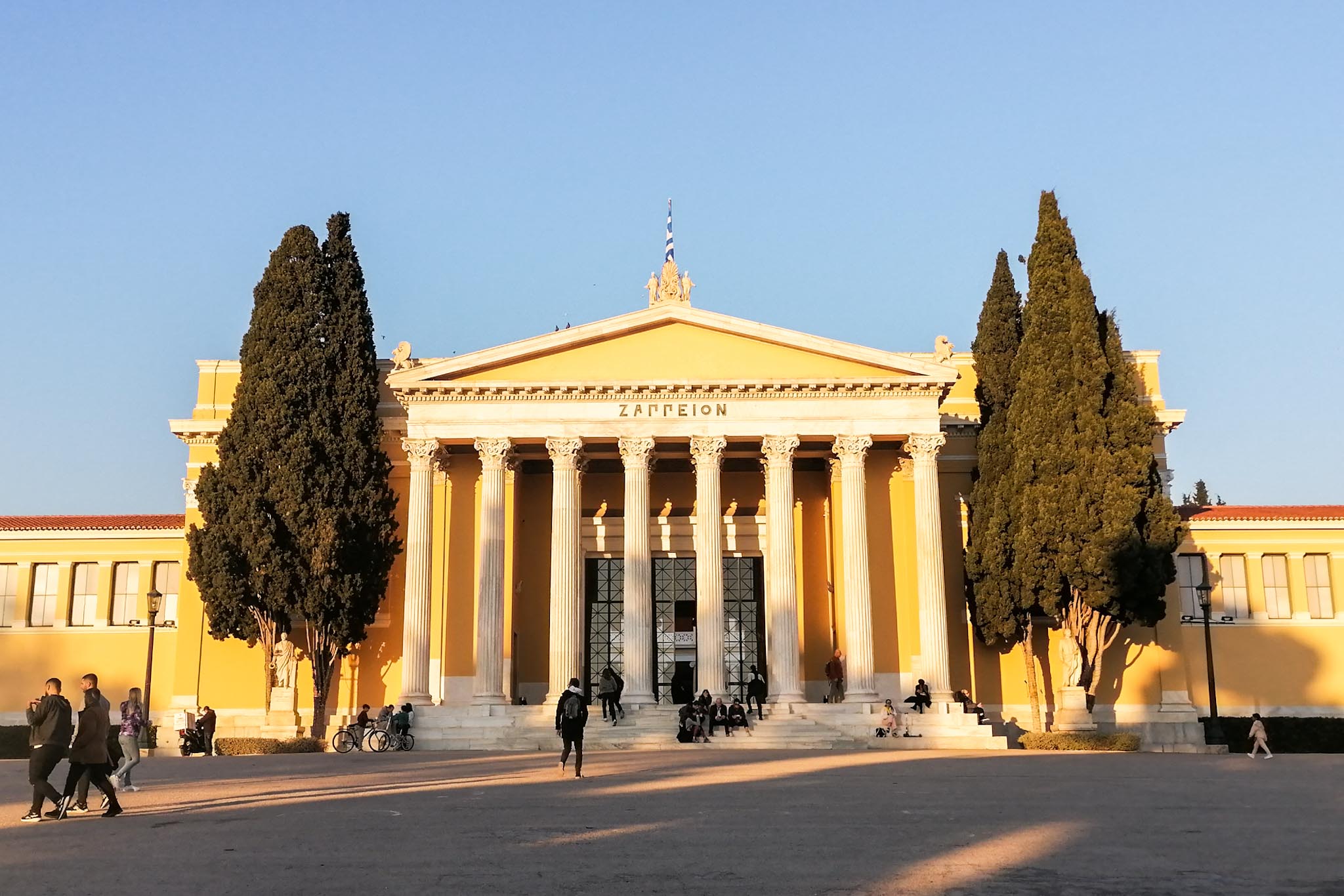
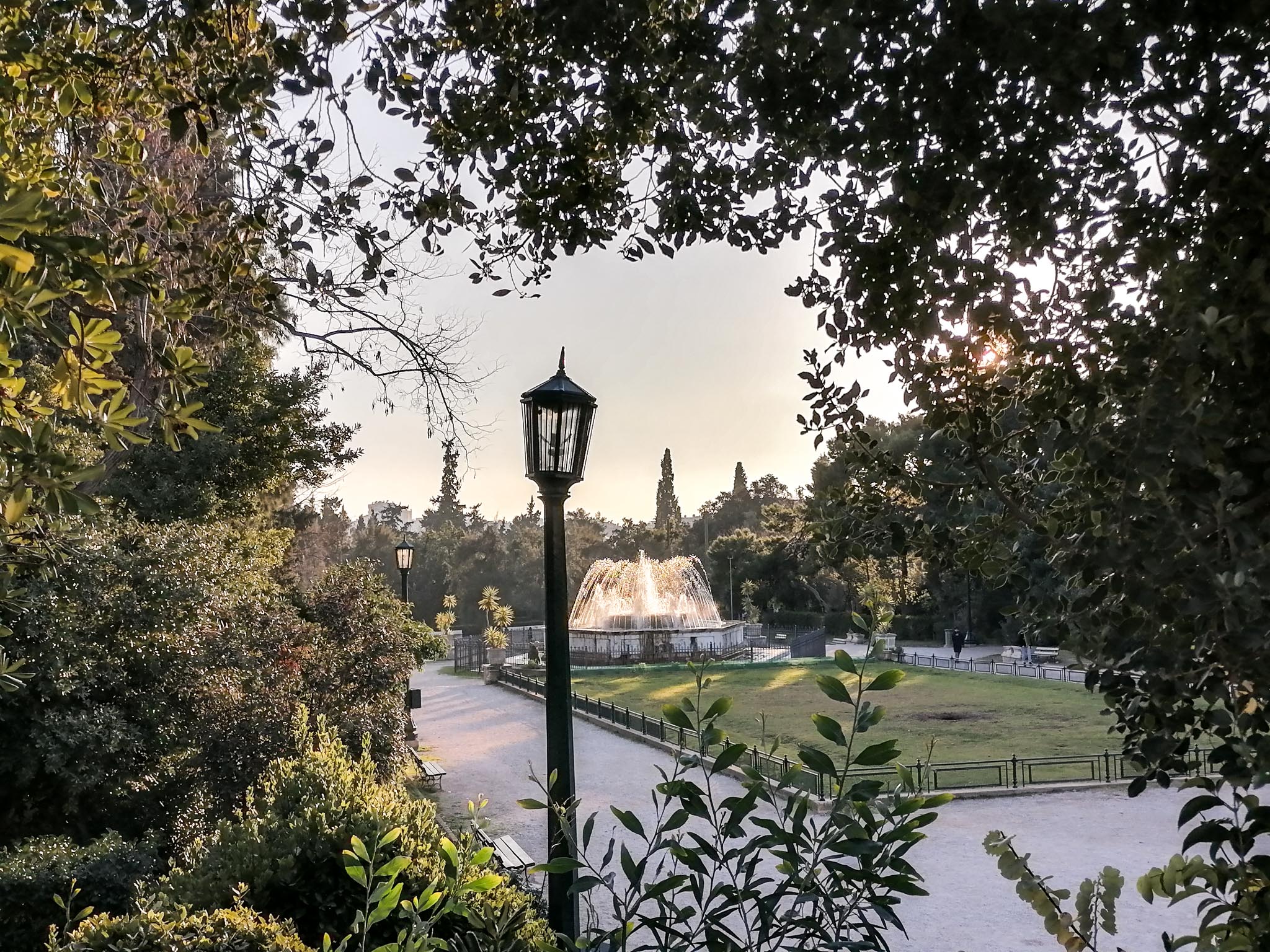
As the various stores that we must visit are in the four corners of the city, we spend these days of rest to pedal: a particularly trying experience. It is difficult for us to find our way in this labyrinth of one-way streets, in the middle of torrents of scooters and cabs. Several times, we are even brought to drive during several kilometers on the equivalent of the ring road (there is no other alternative to join the Decathlon…). During the day, it is quite terrible. We let you imagine what it is of night, on a 2×4 ways…
We have nevertheless the opportunity to rest a little, to share a meal in the restaurant with Nikitas and to learn more about the city, thanks to our host, very cultivated! The third evening, we go to Piraeus, to climb in our ferry in direction of Turkey!
